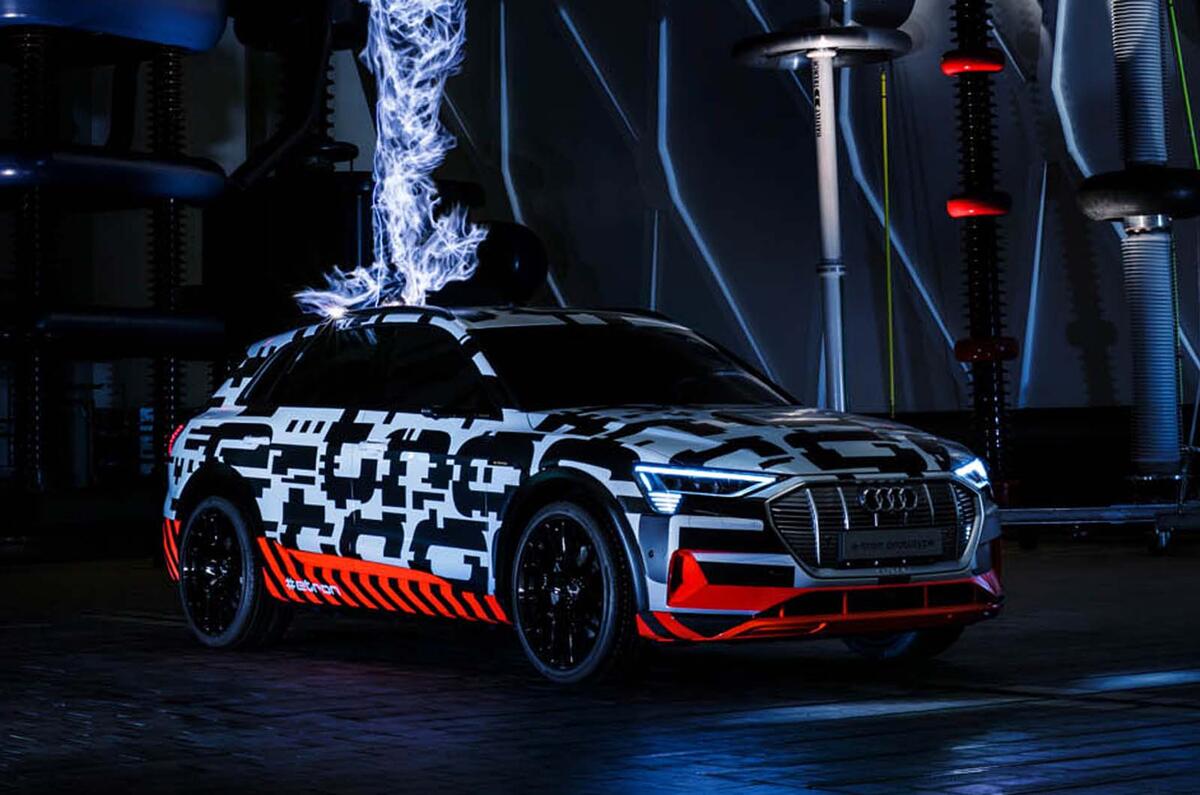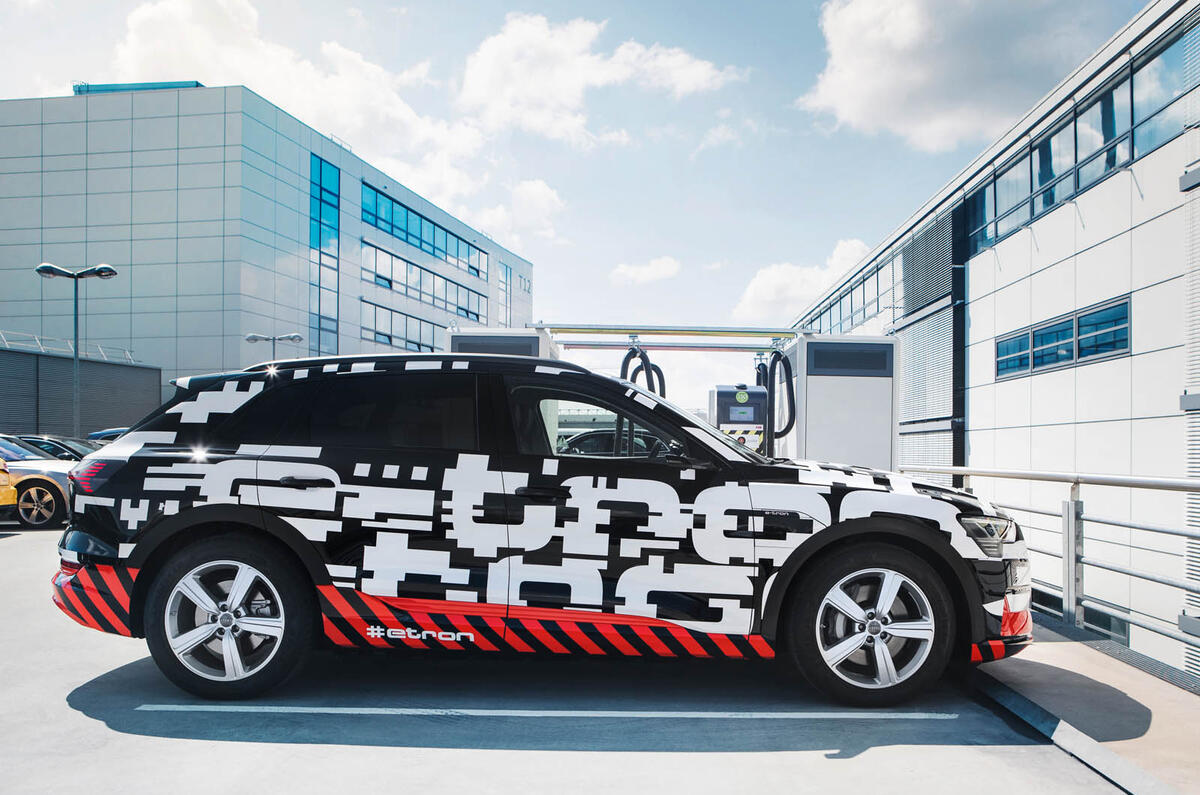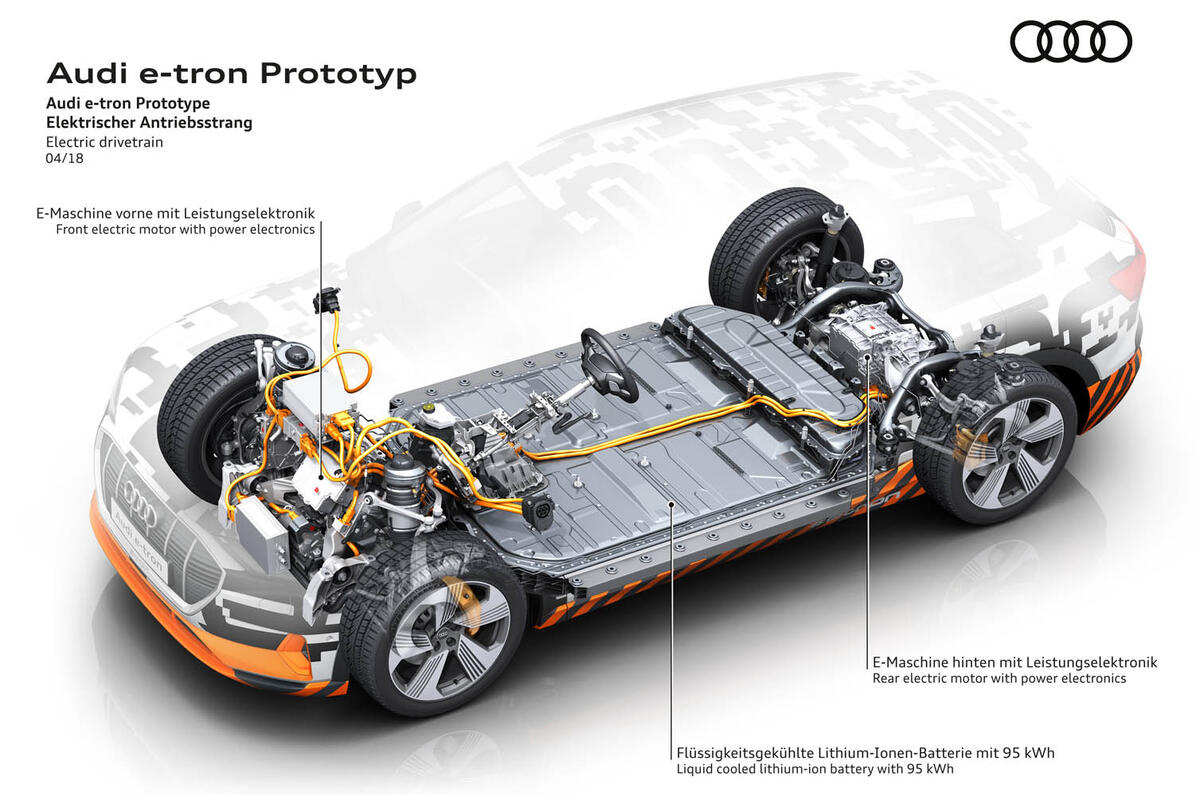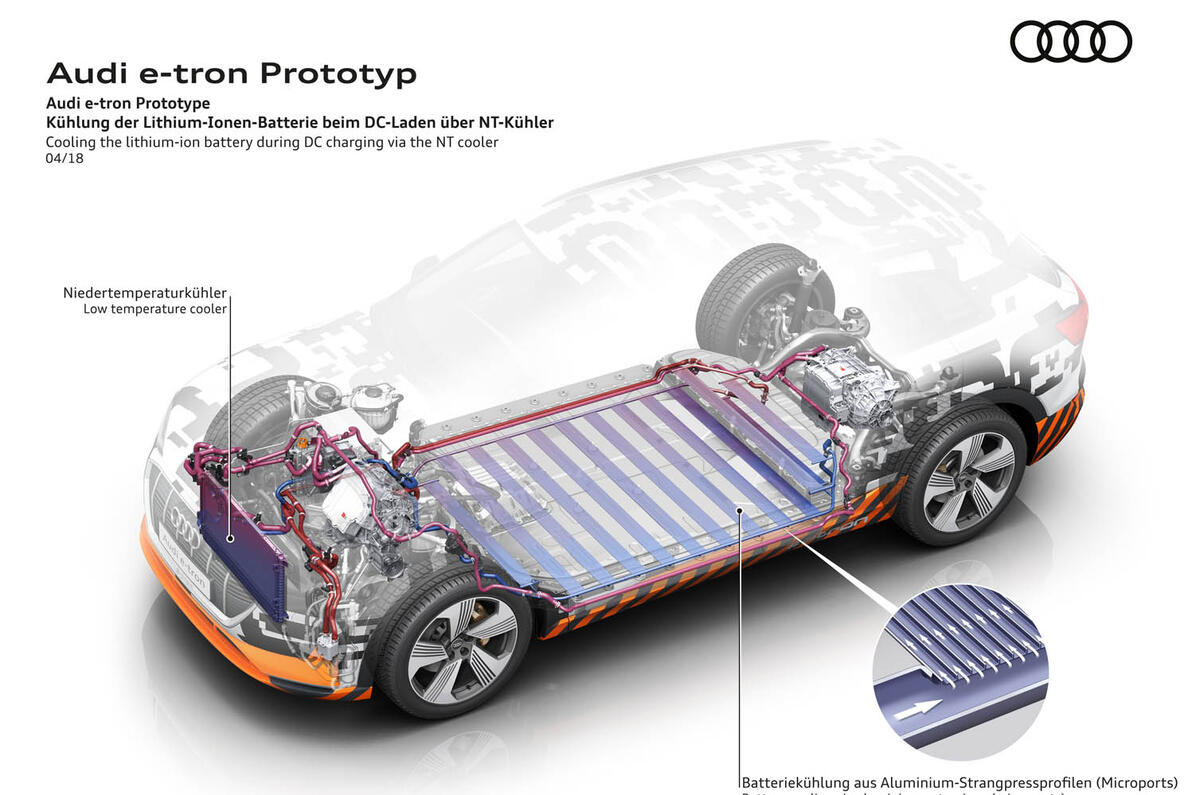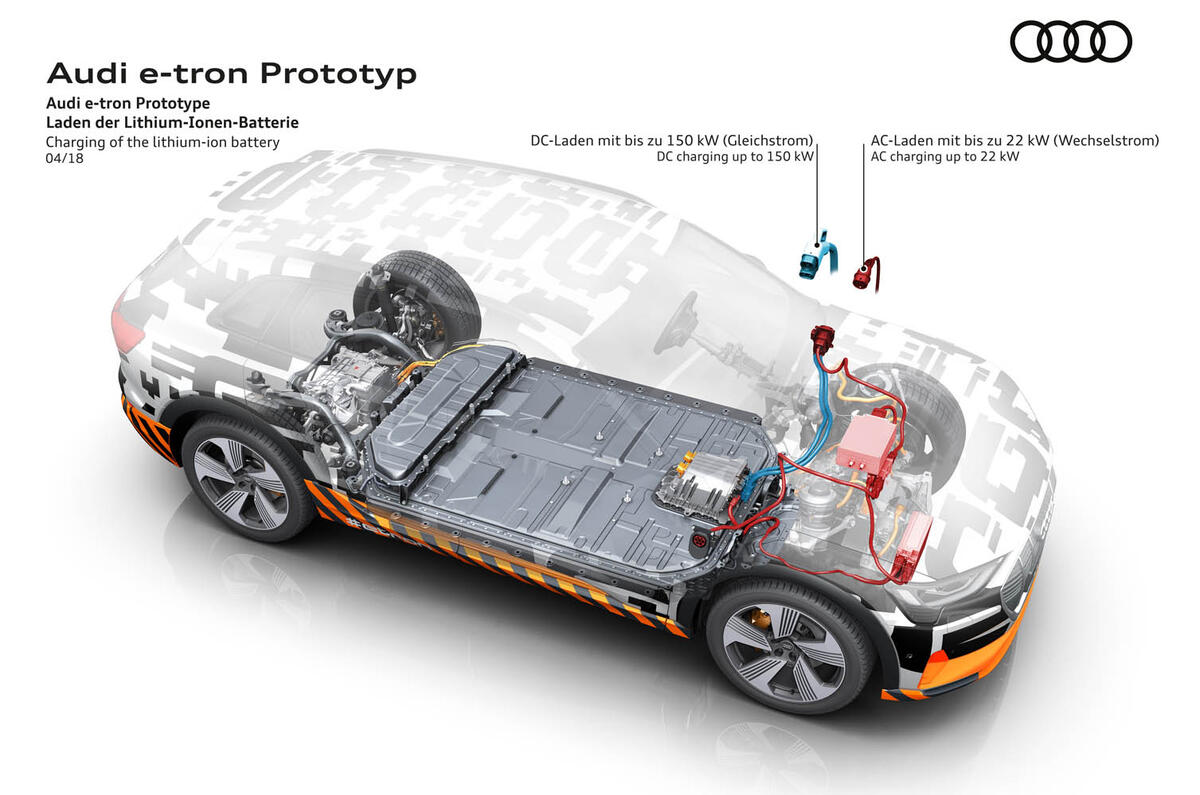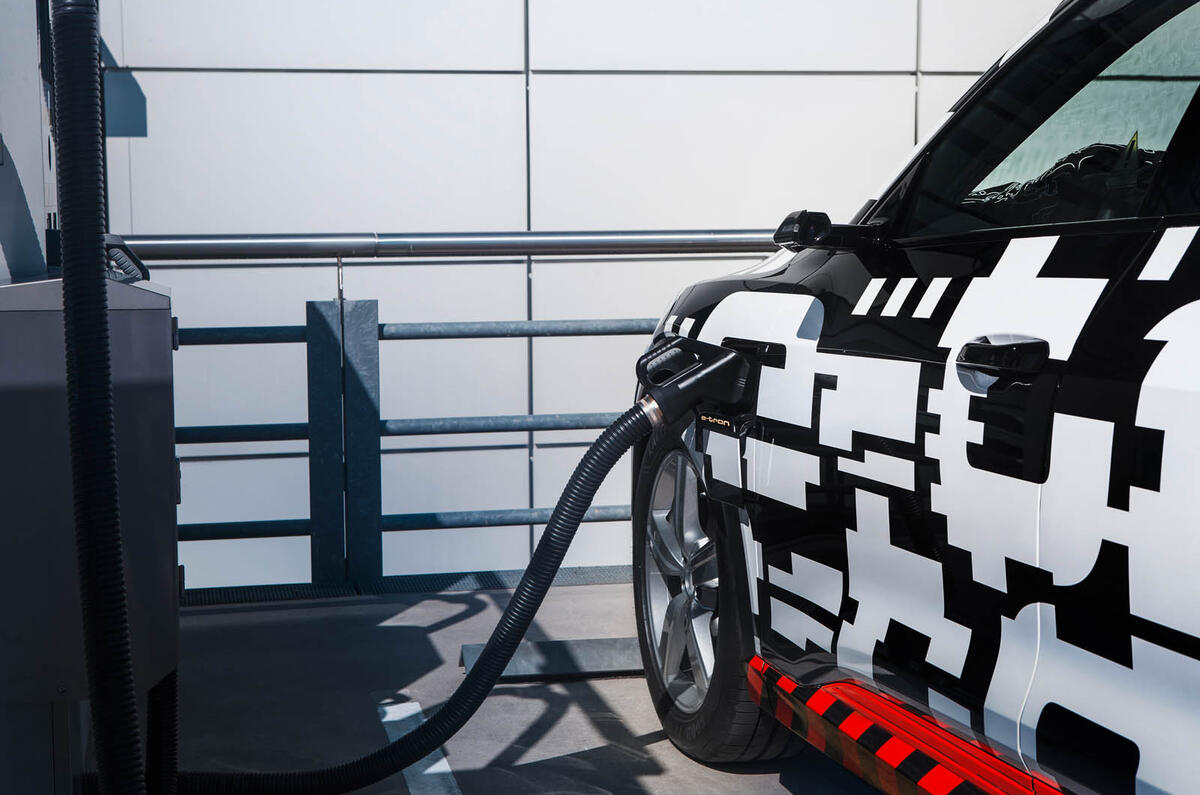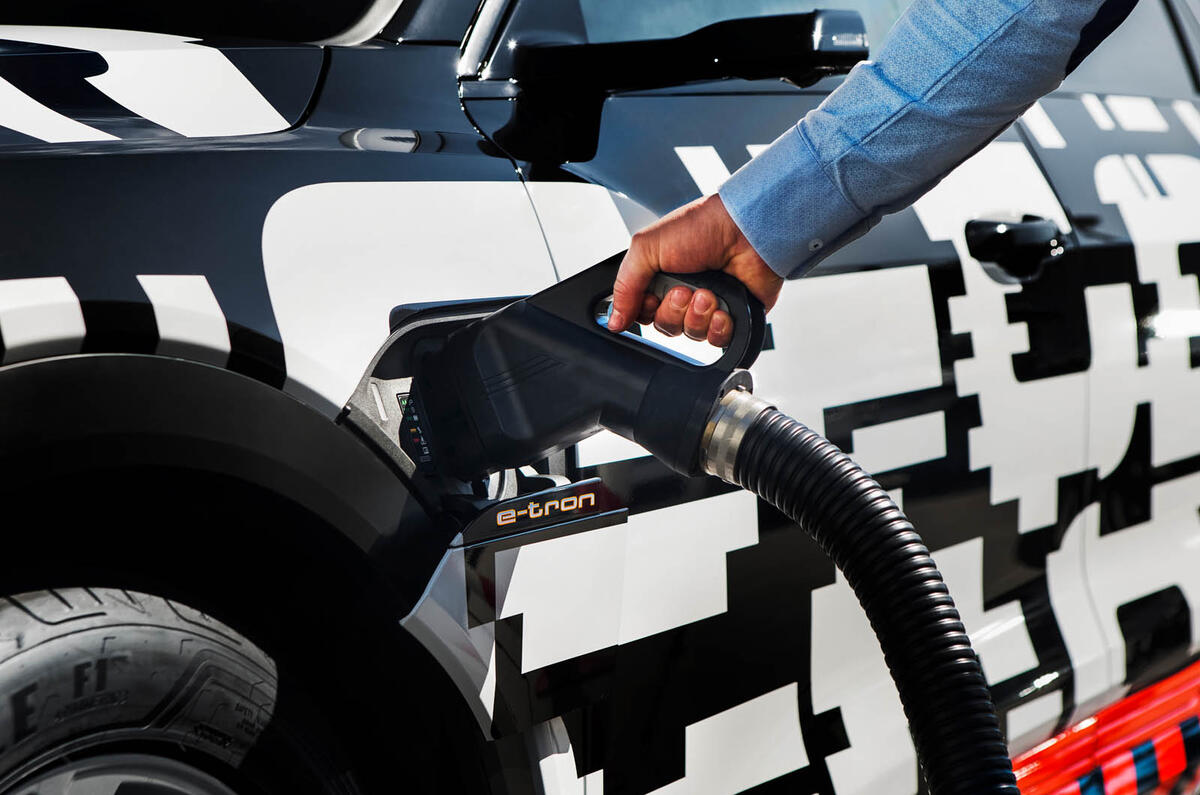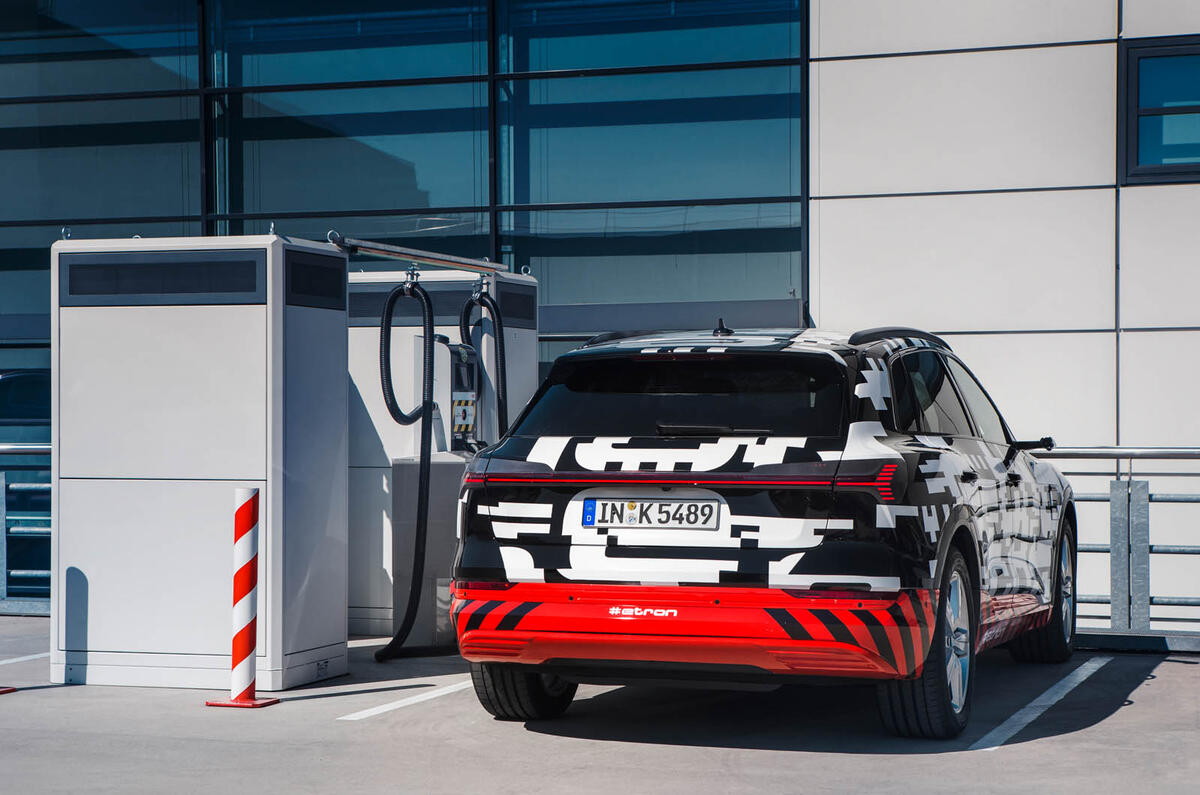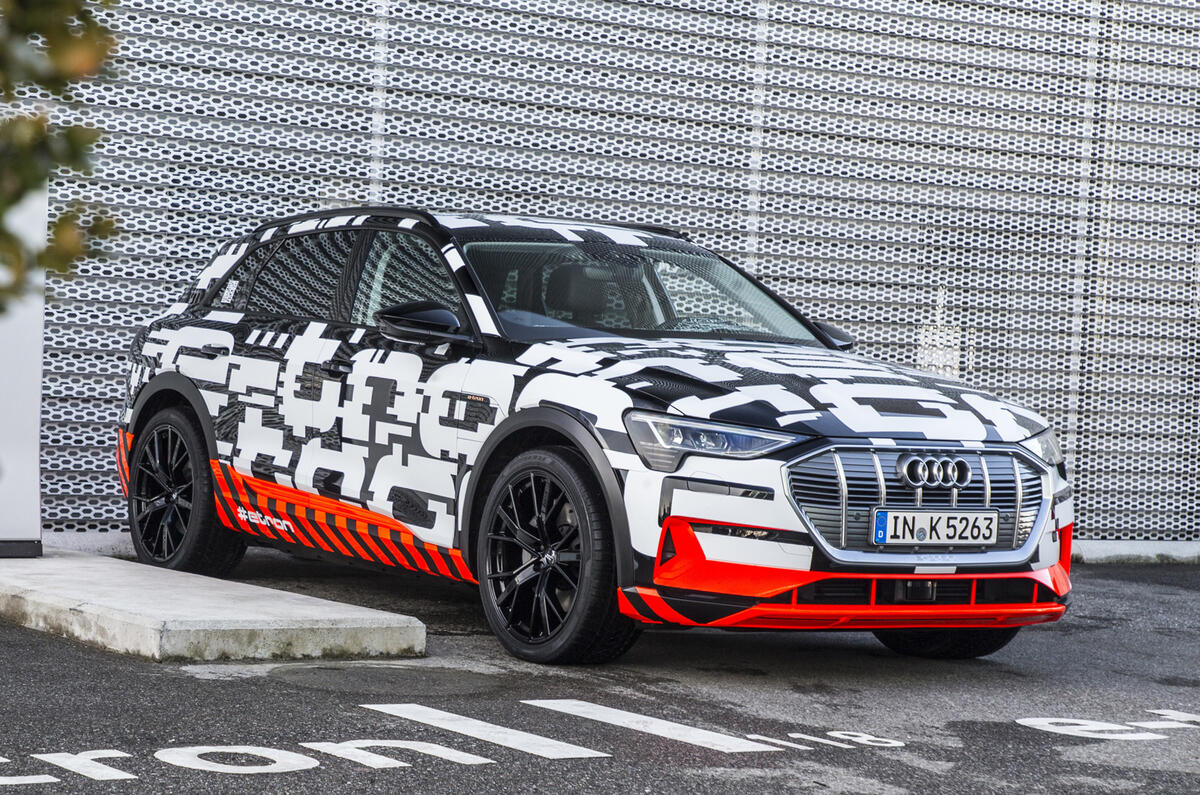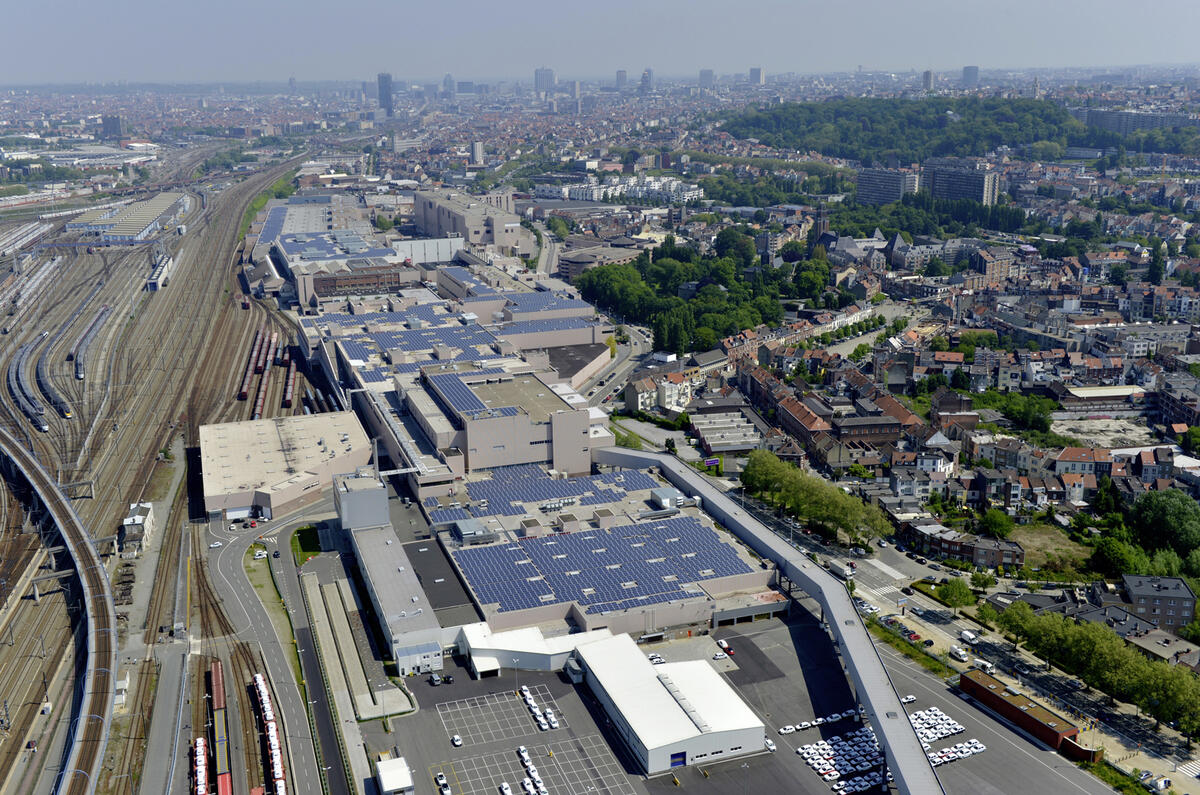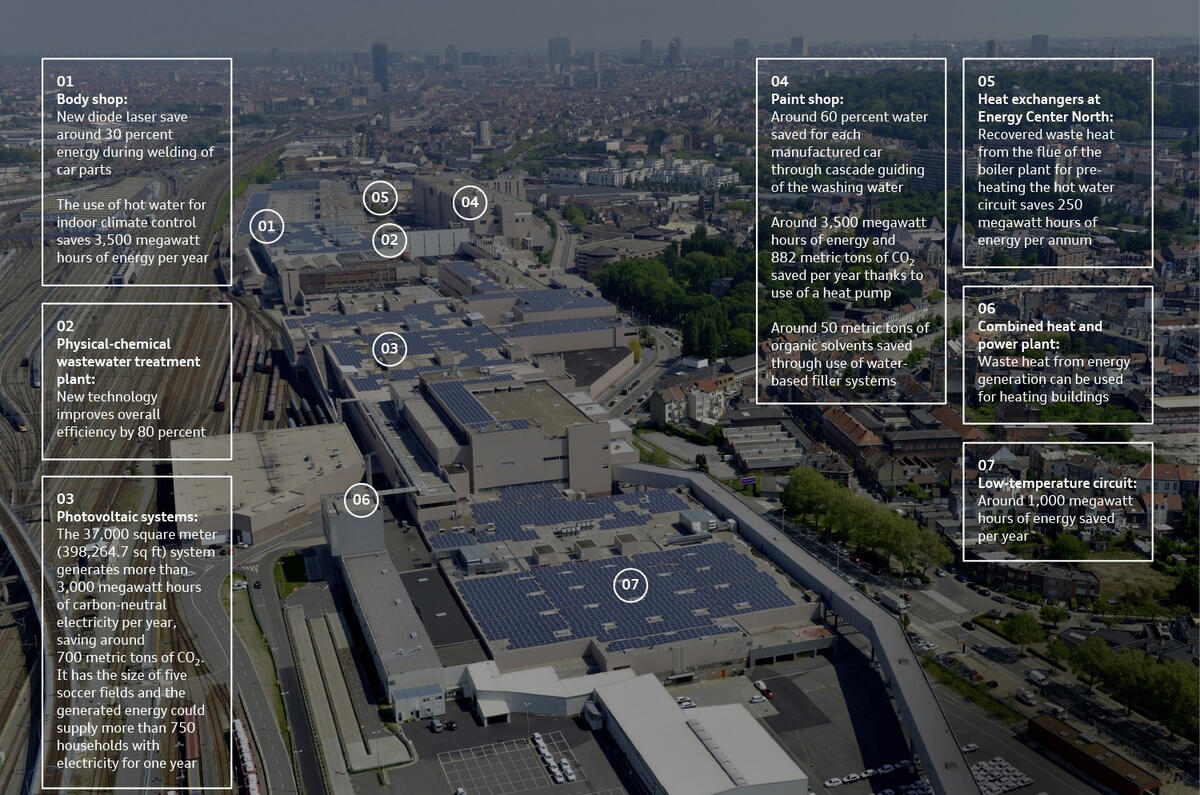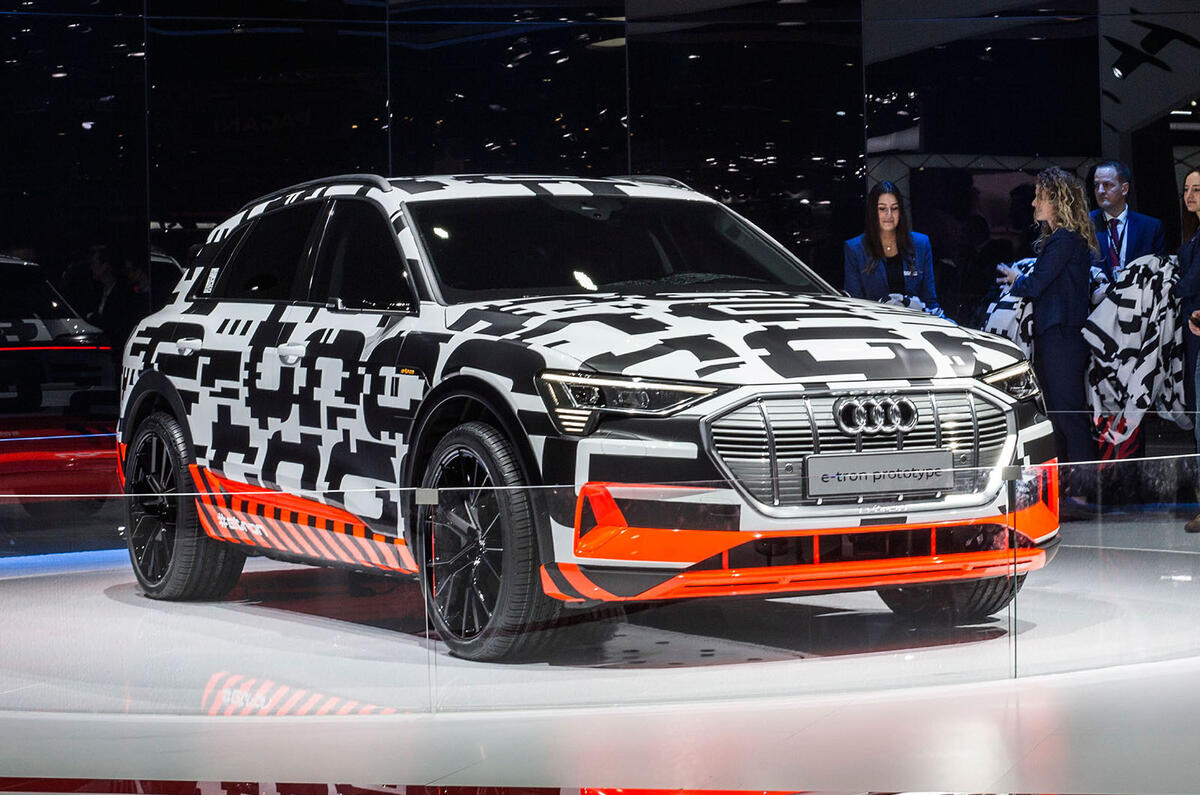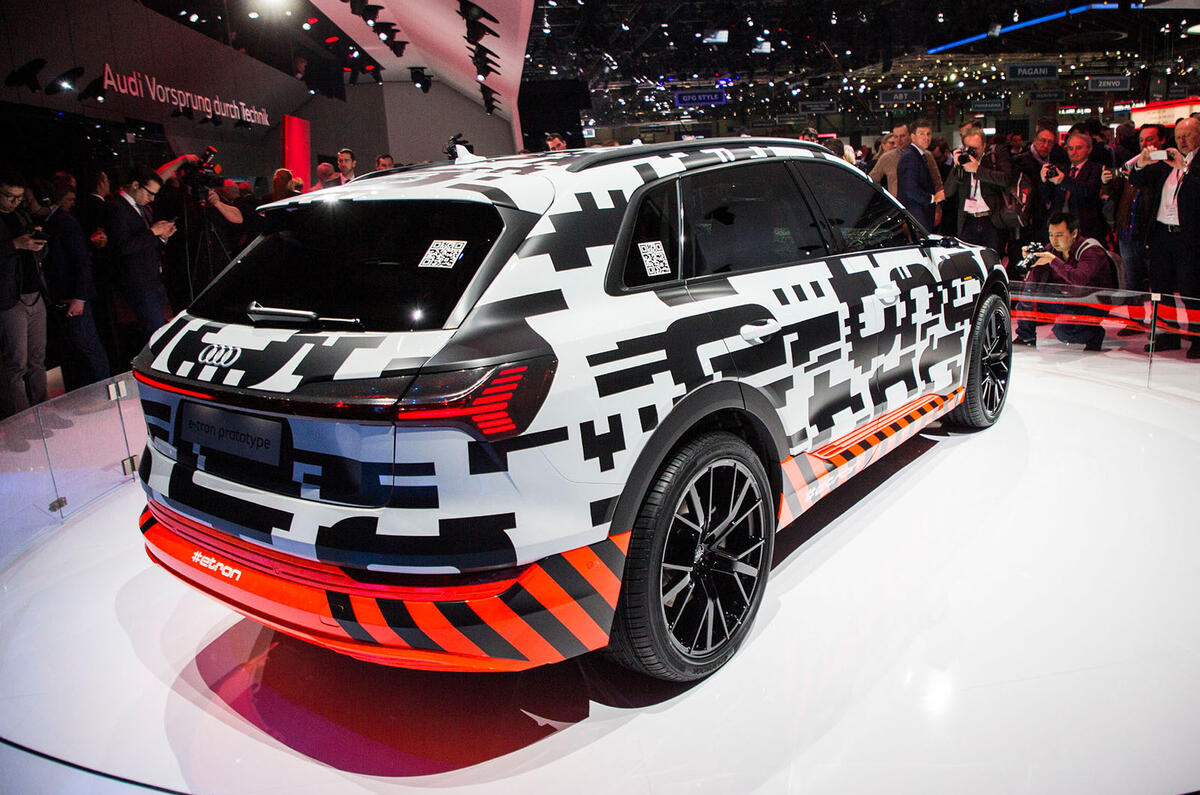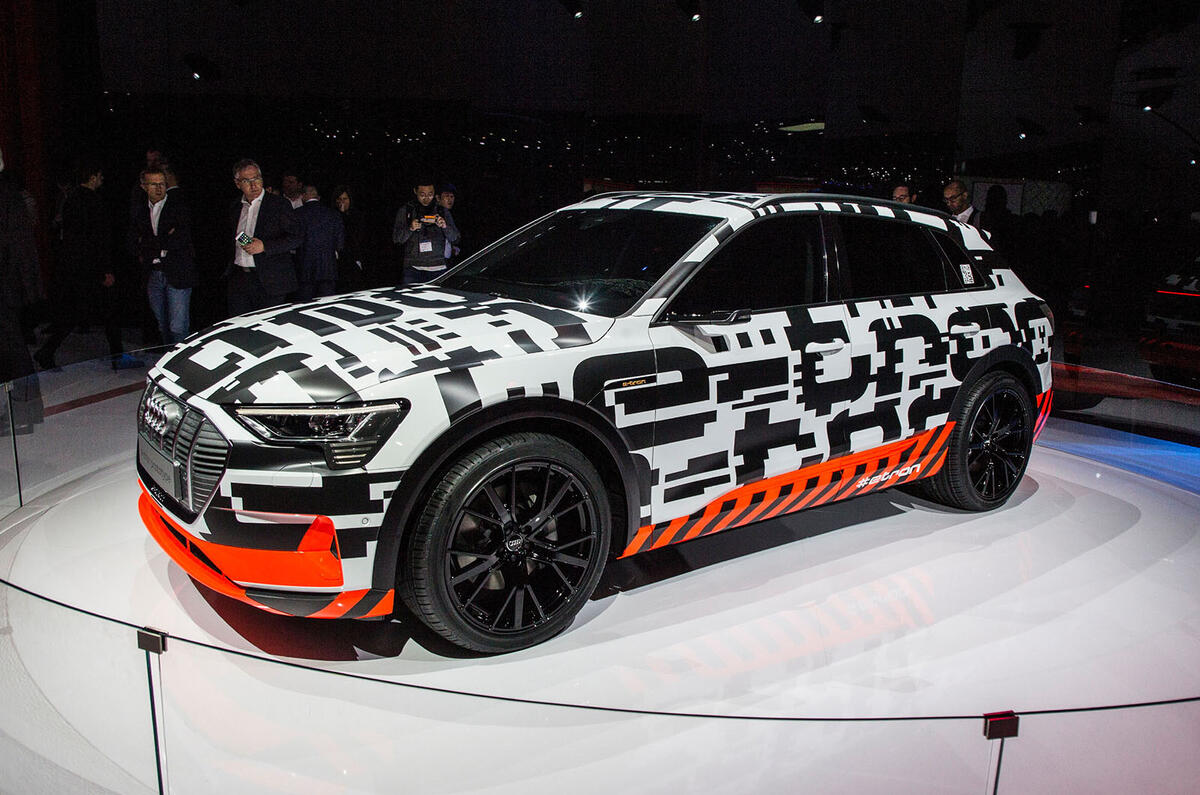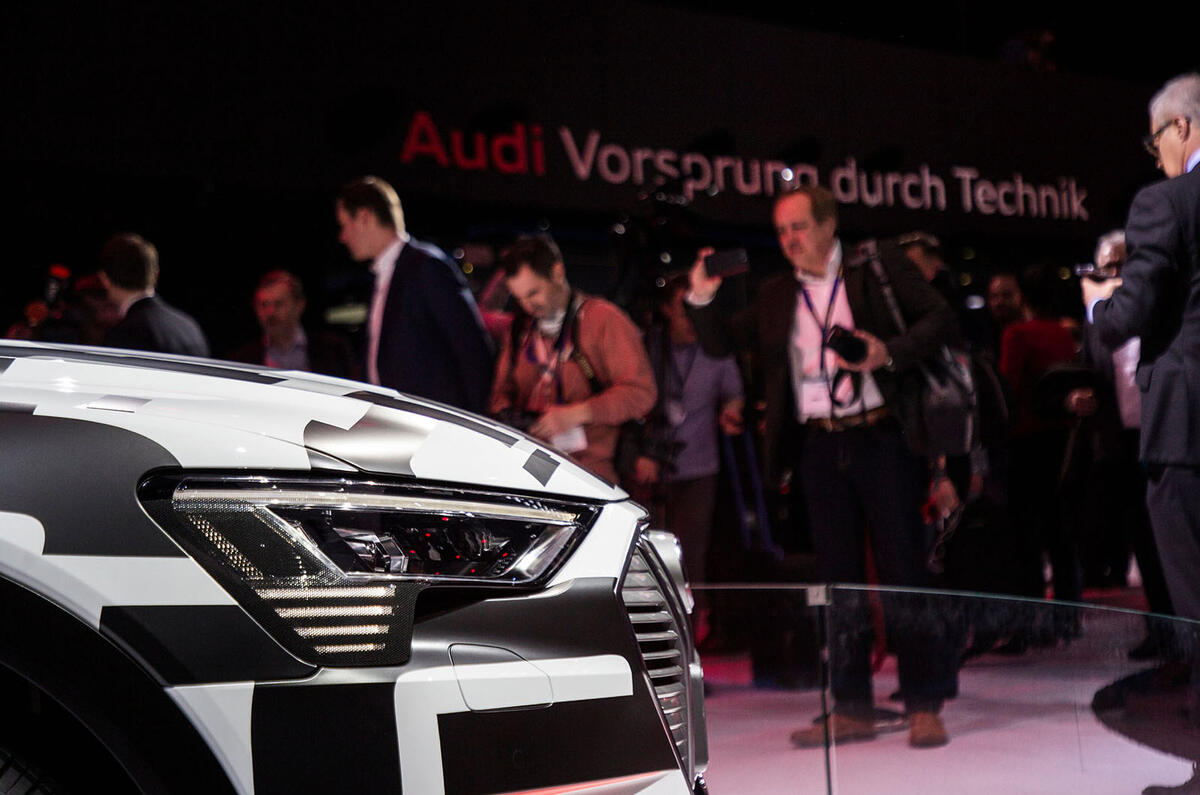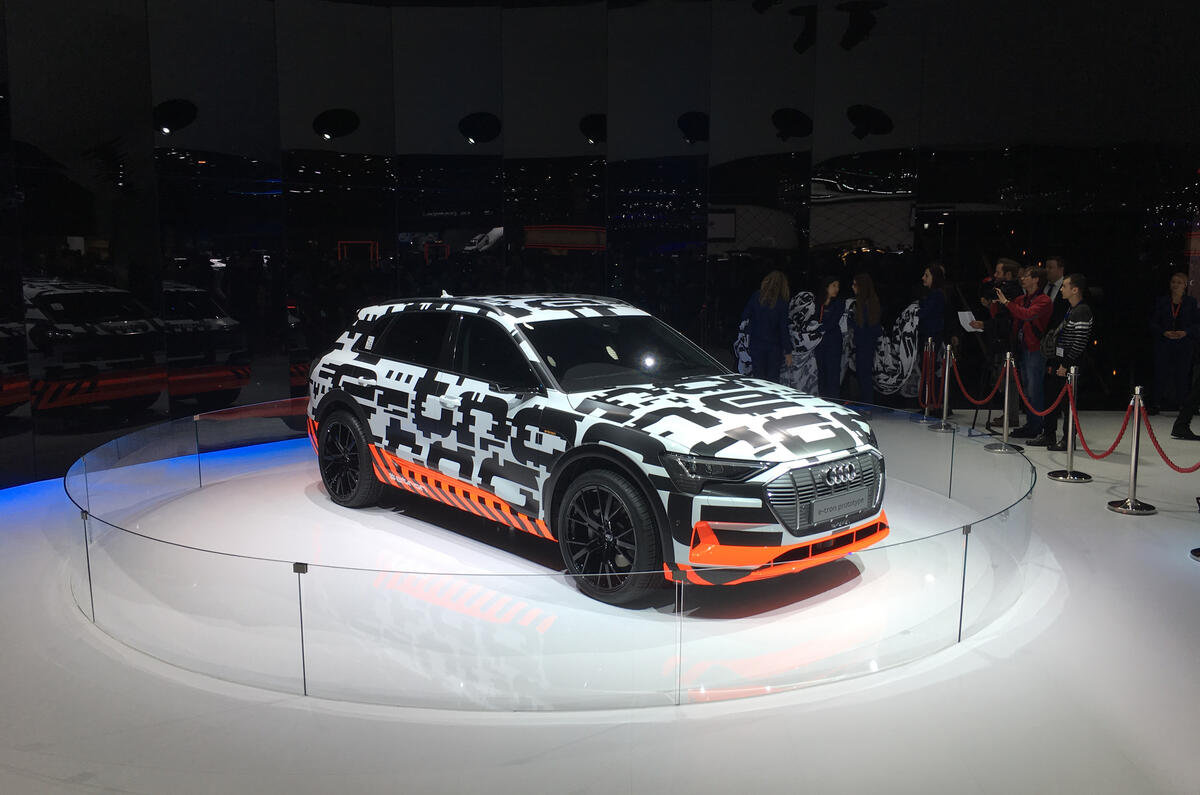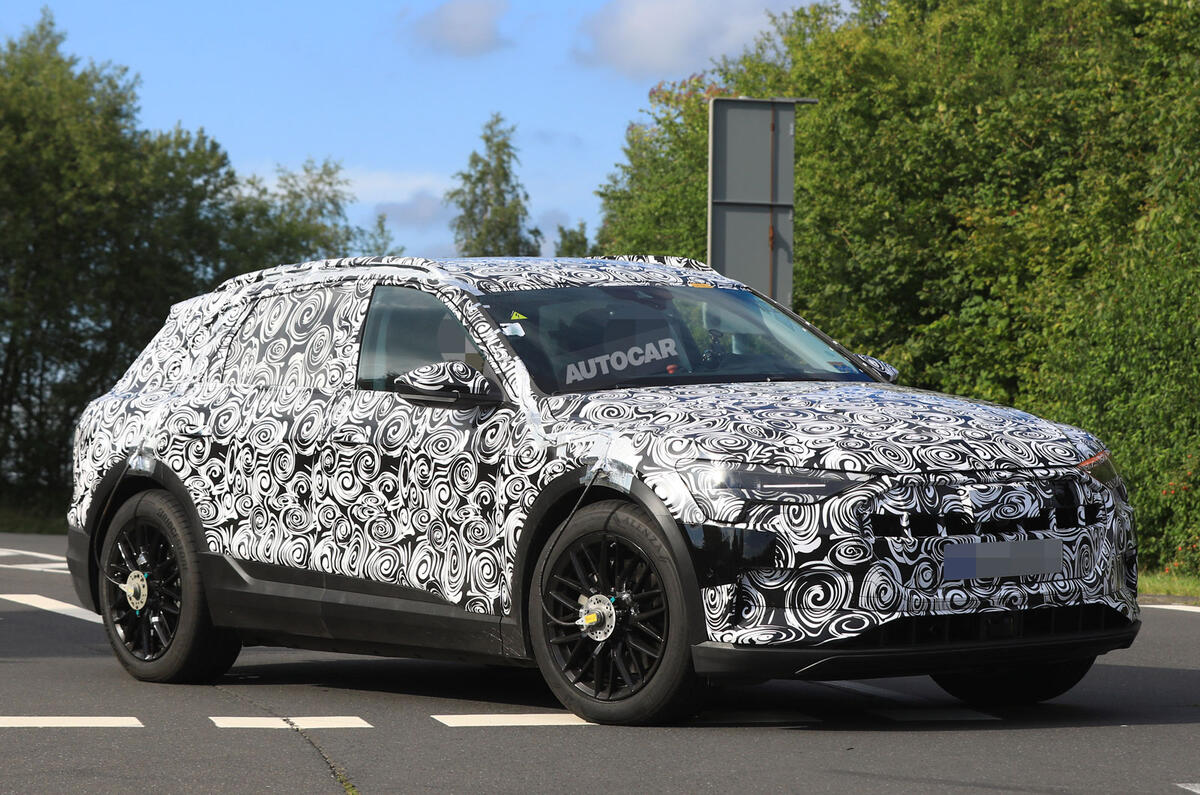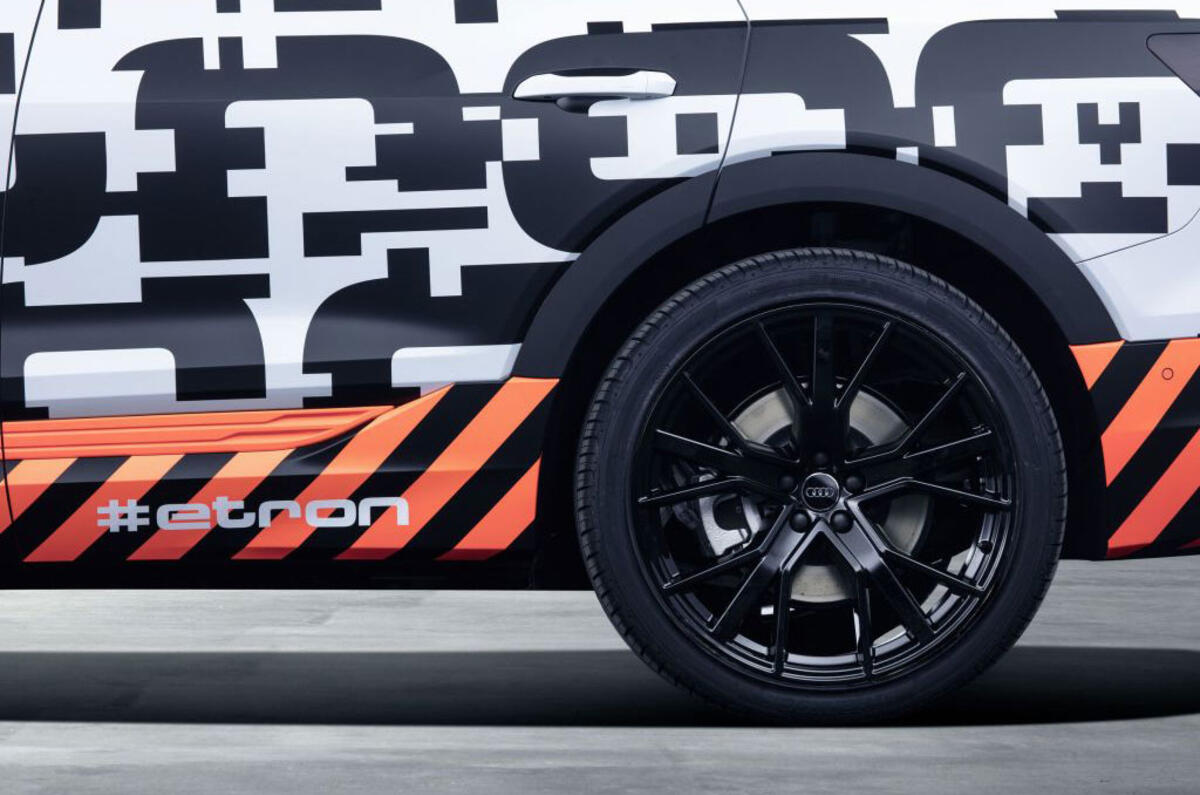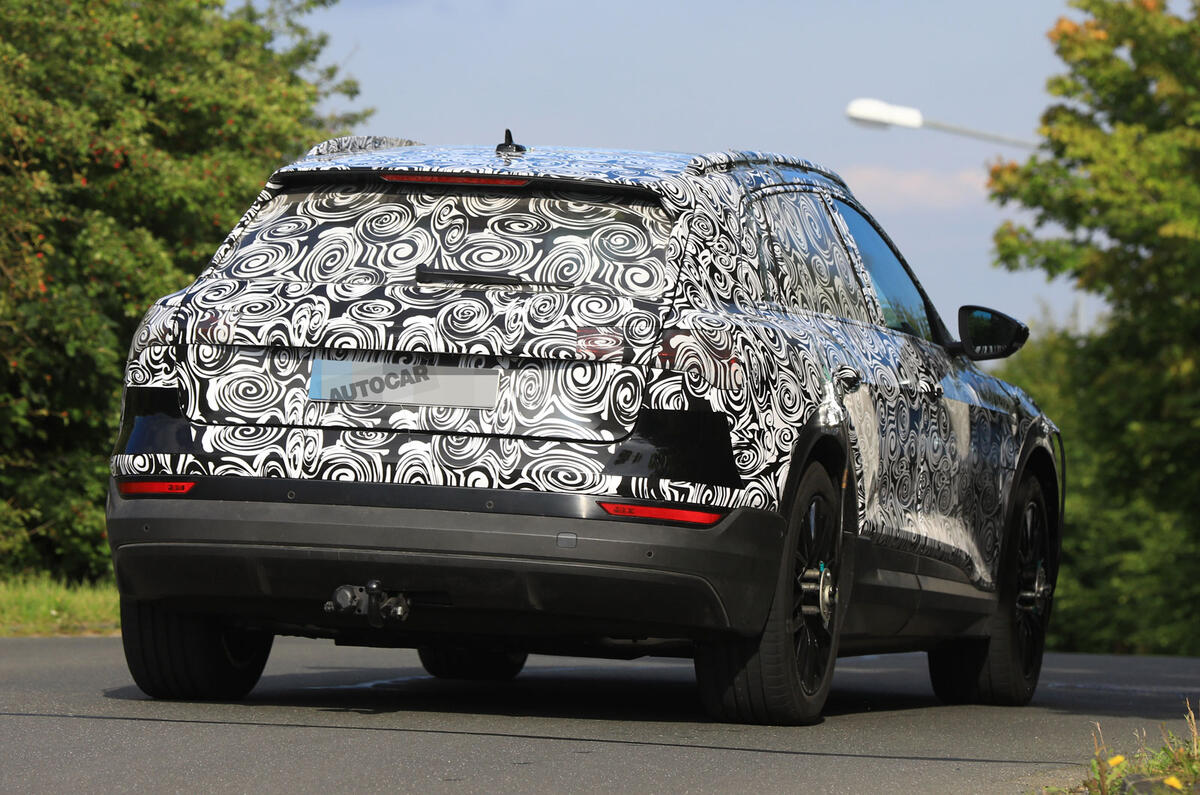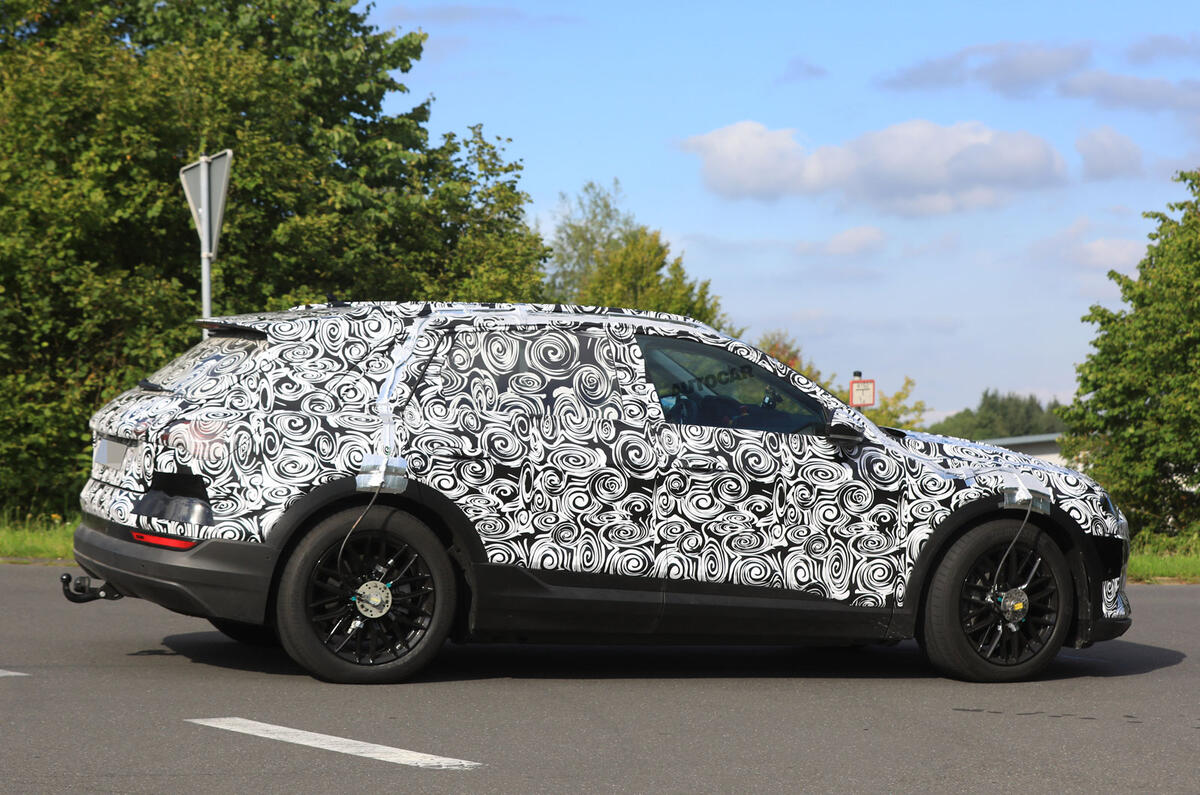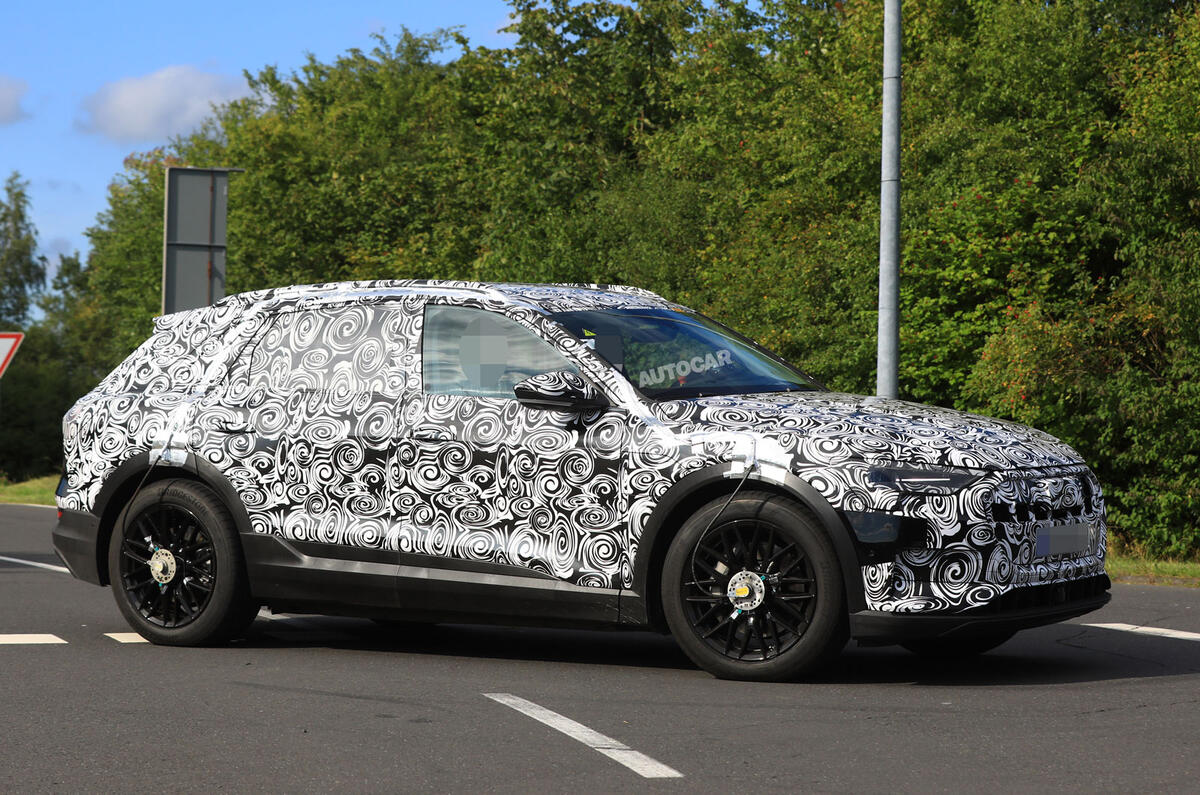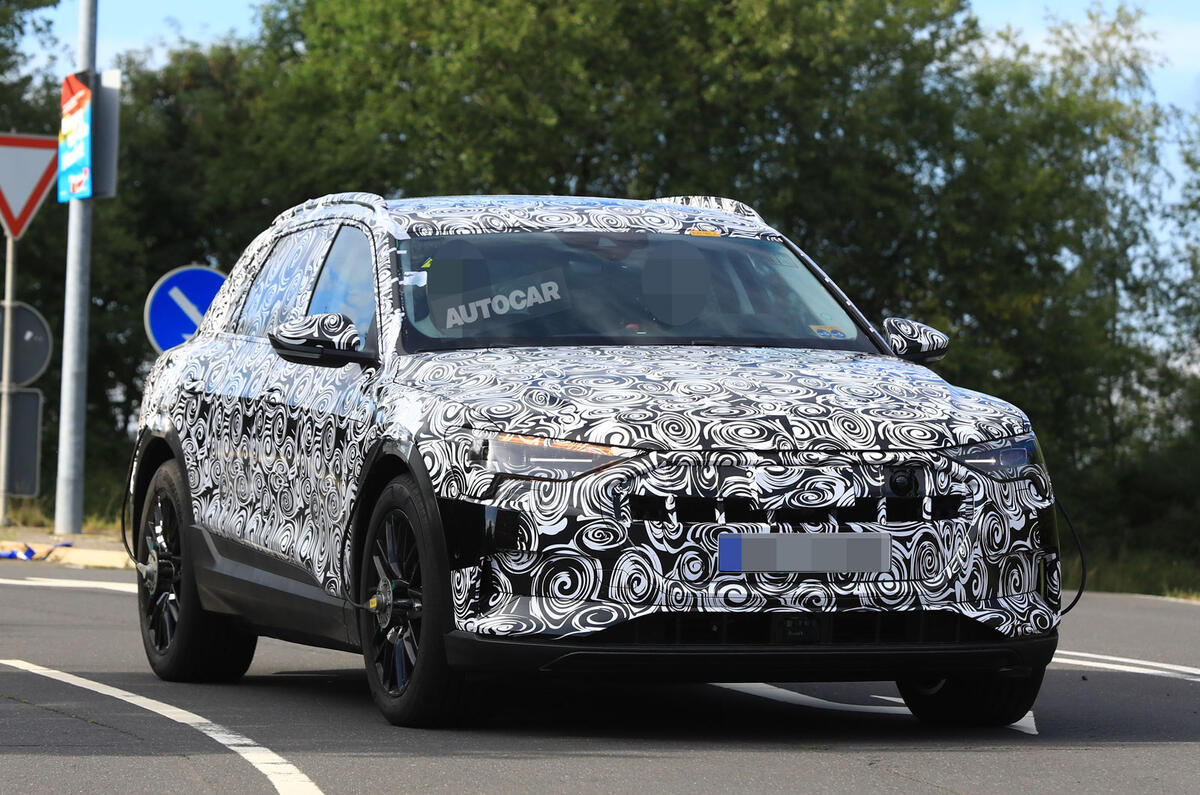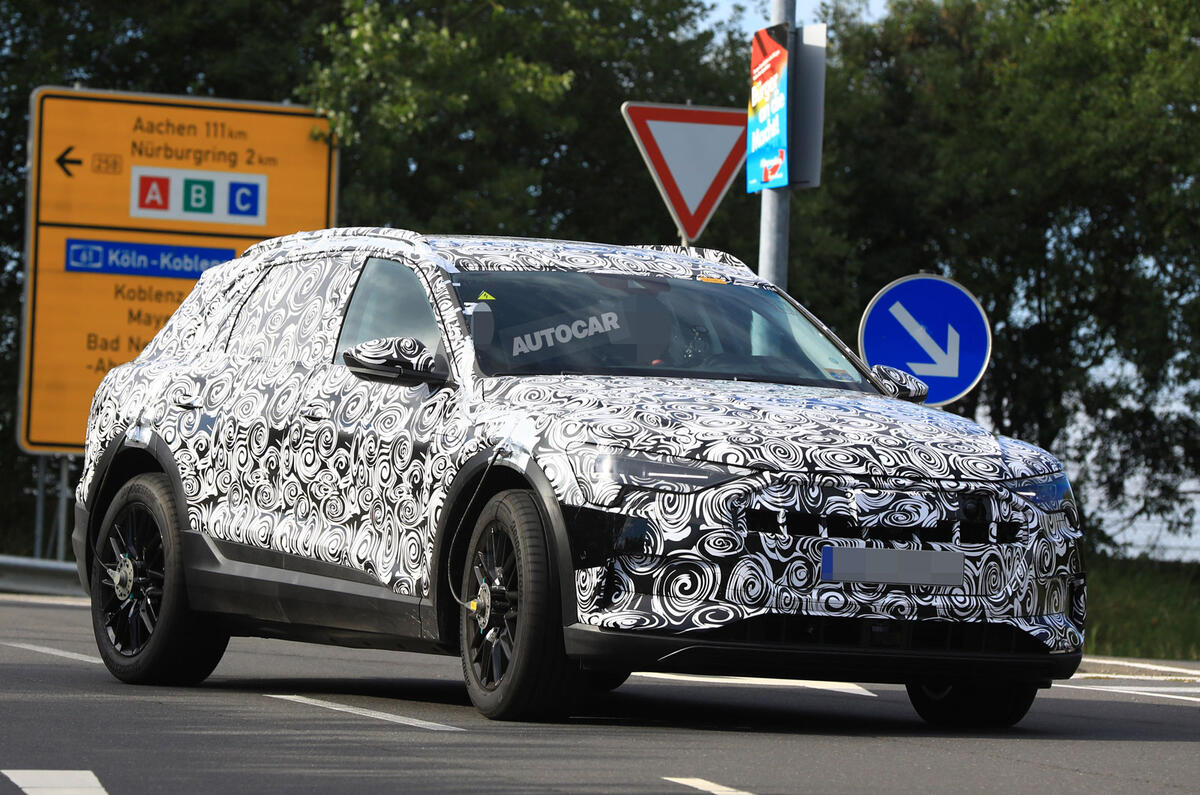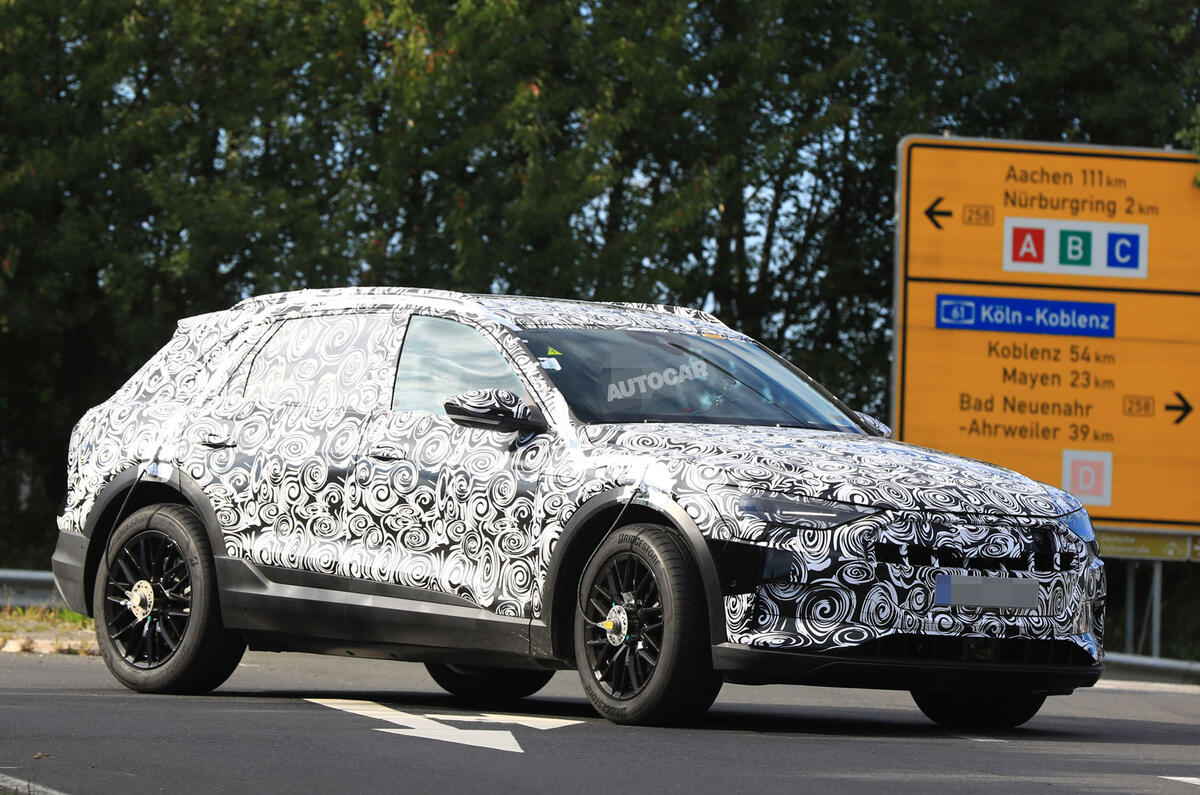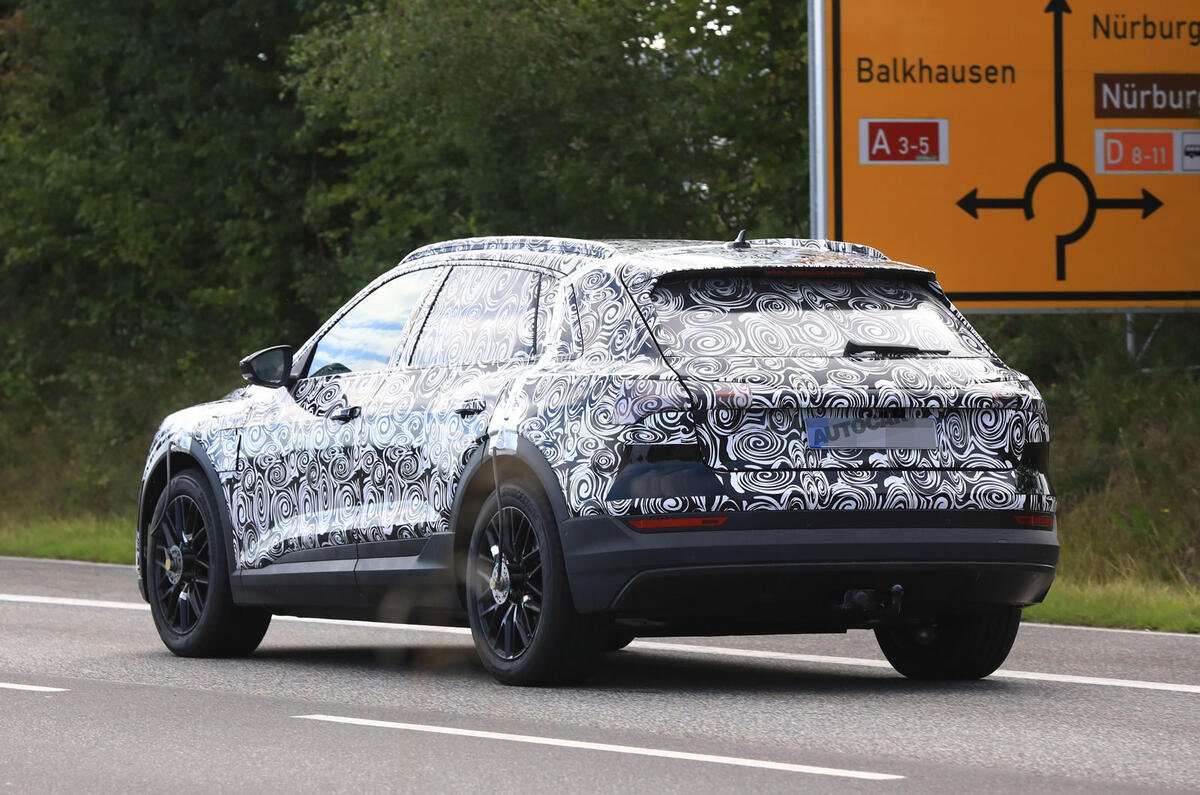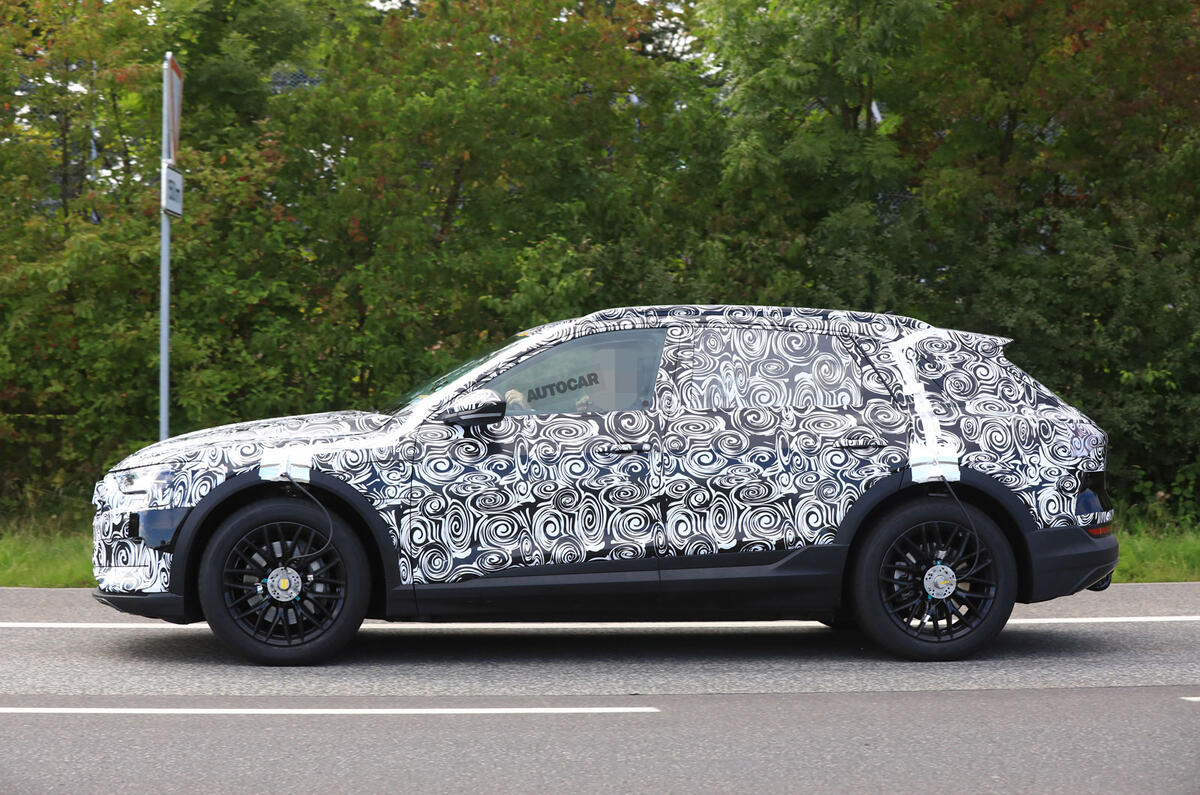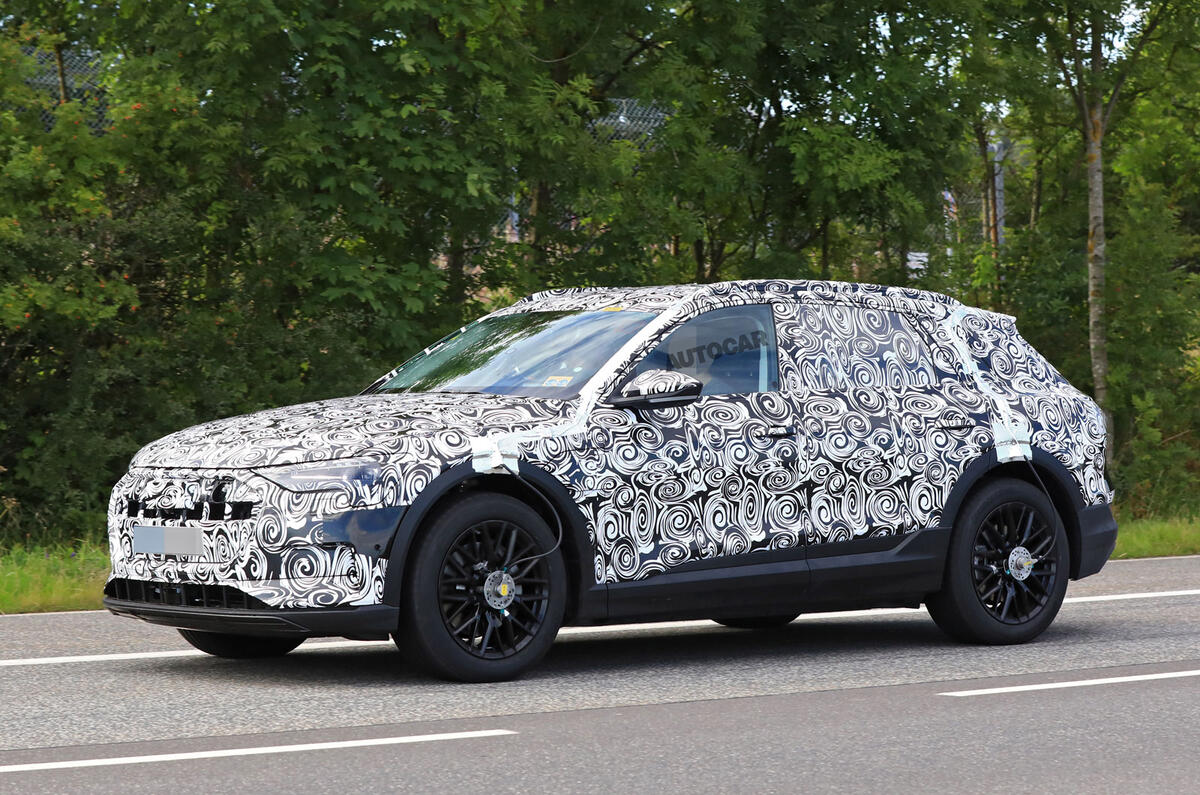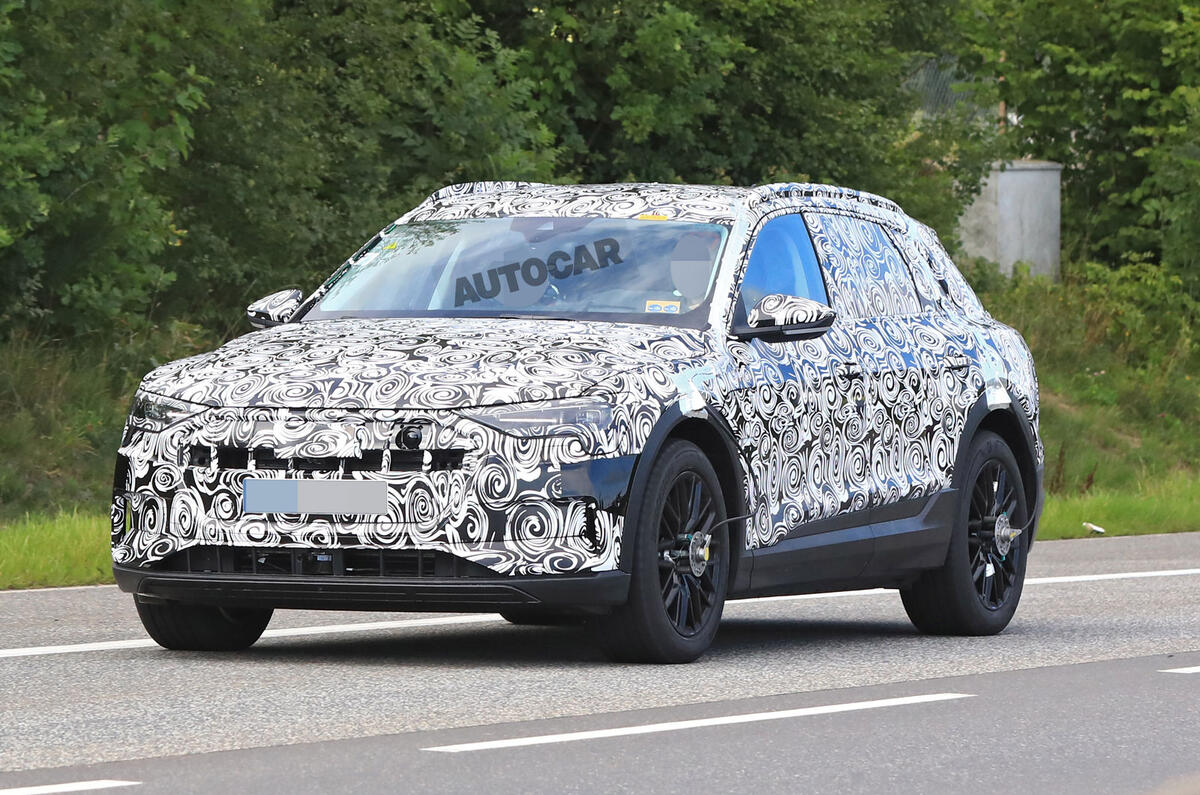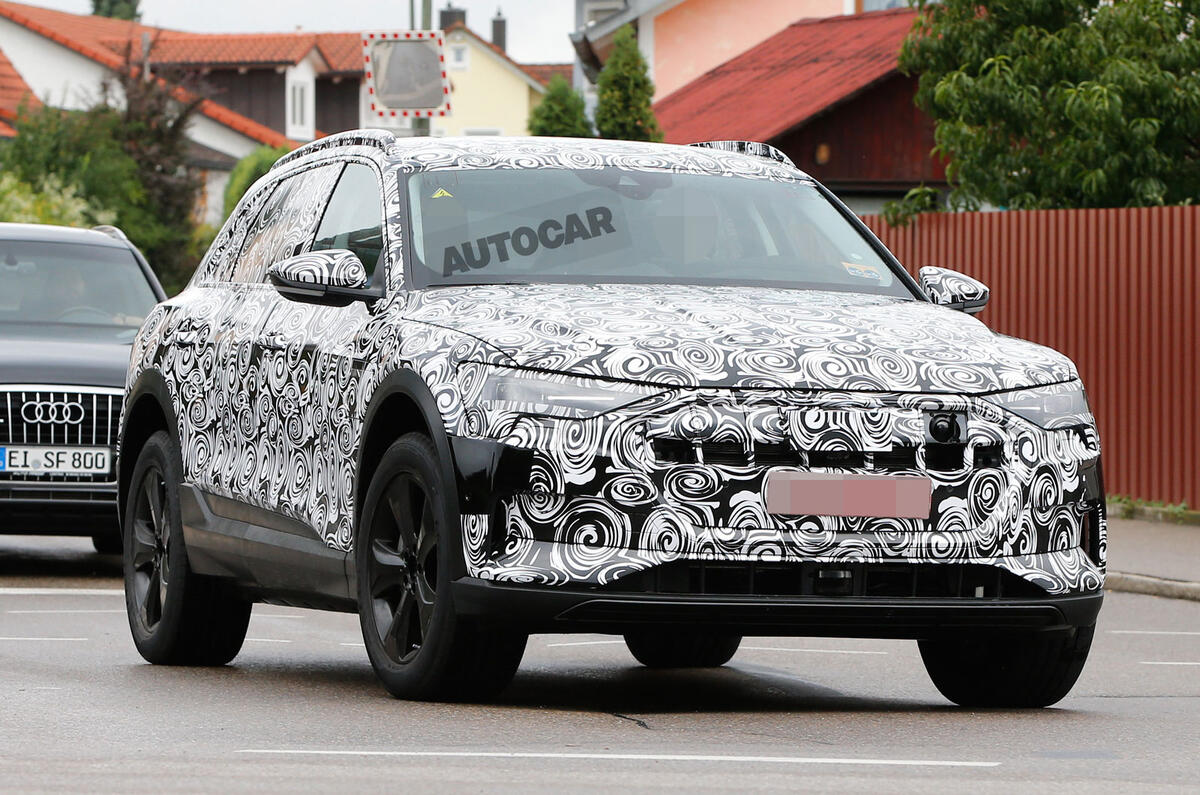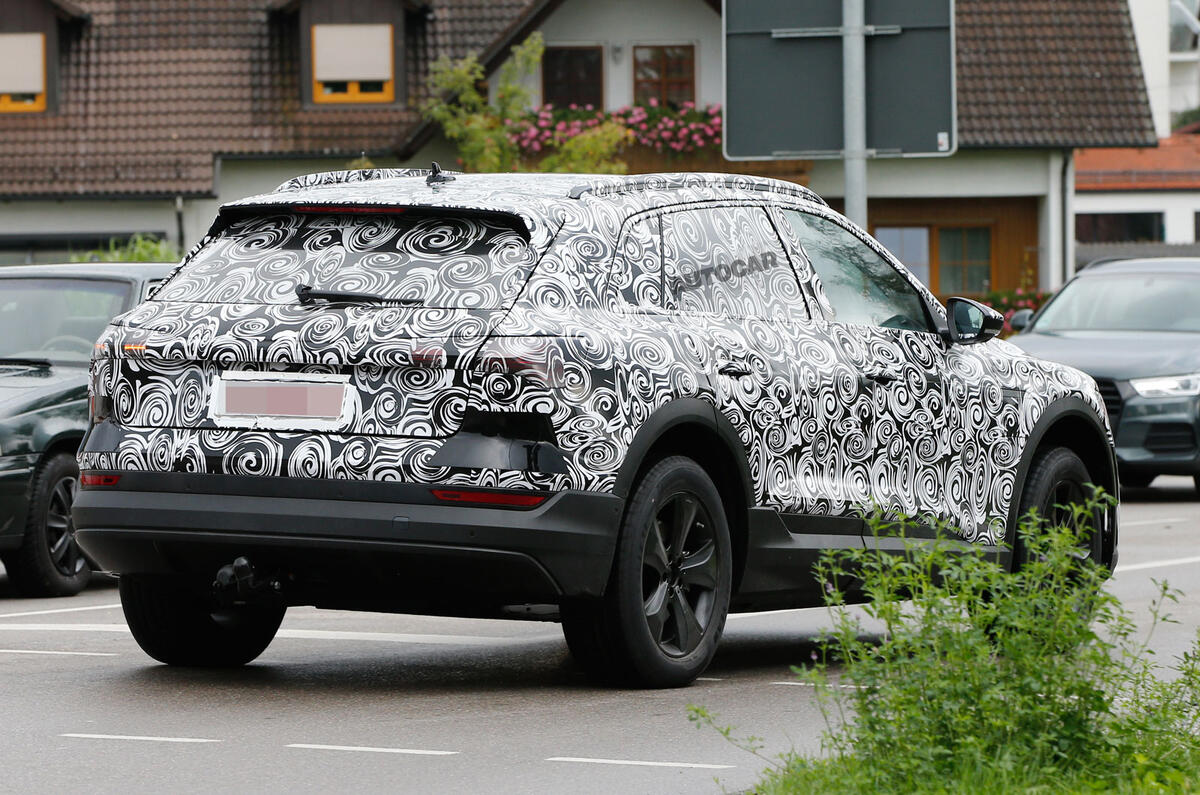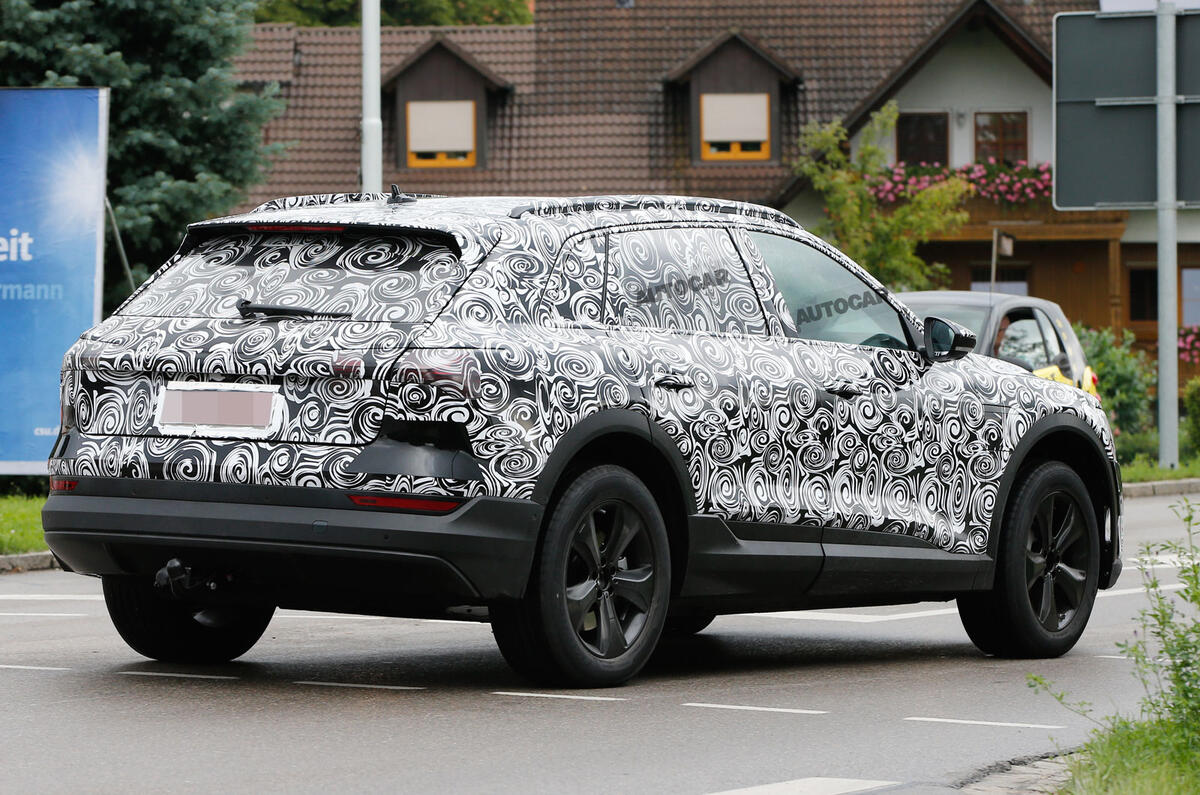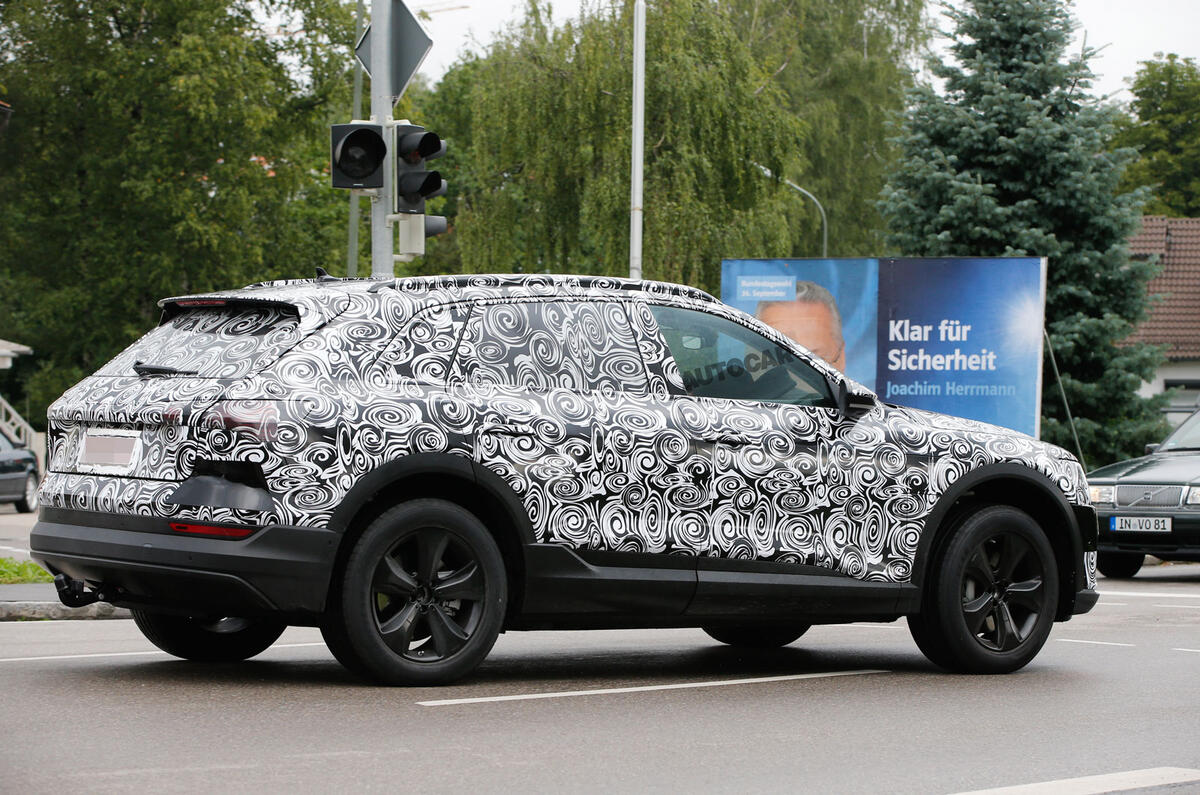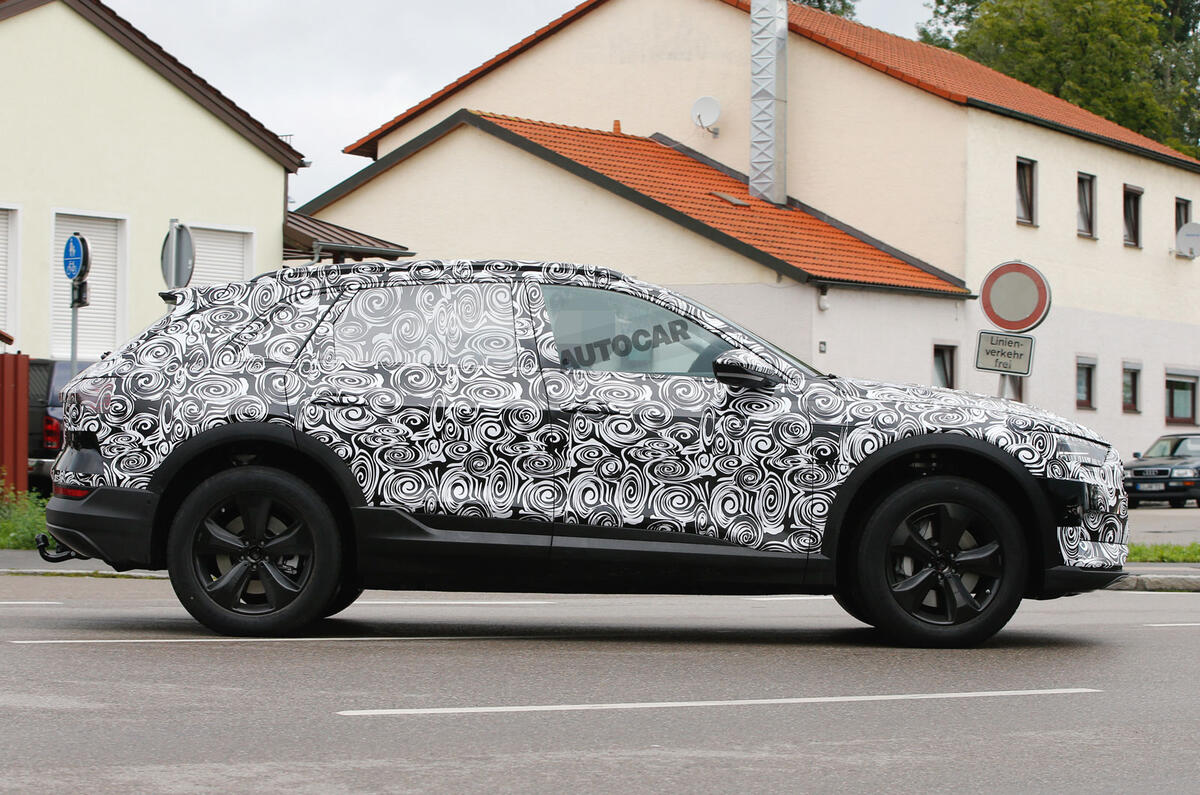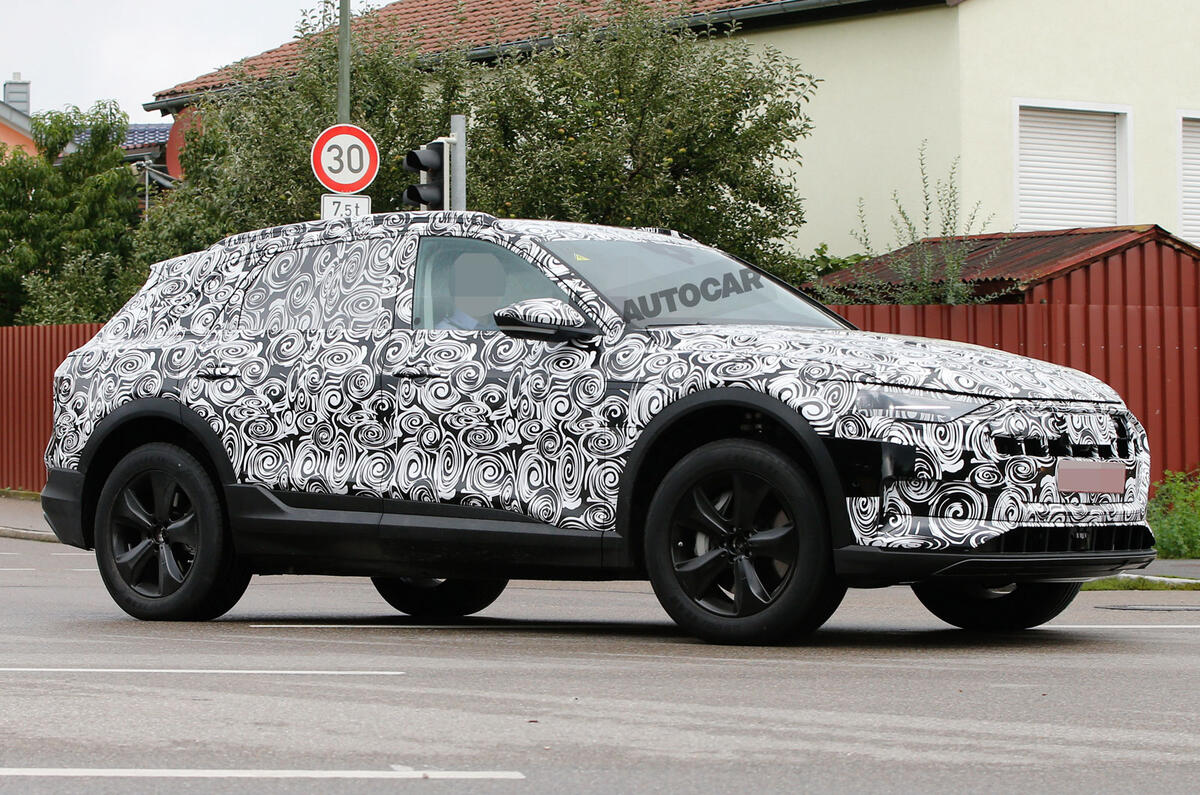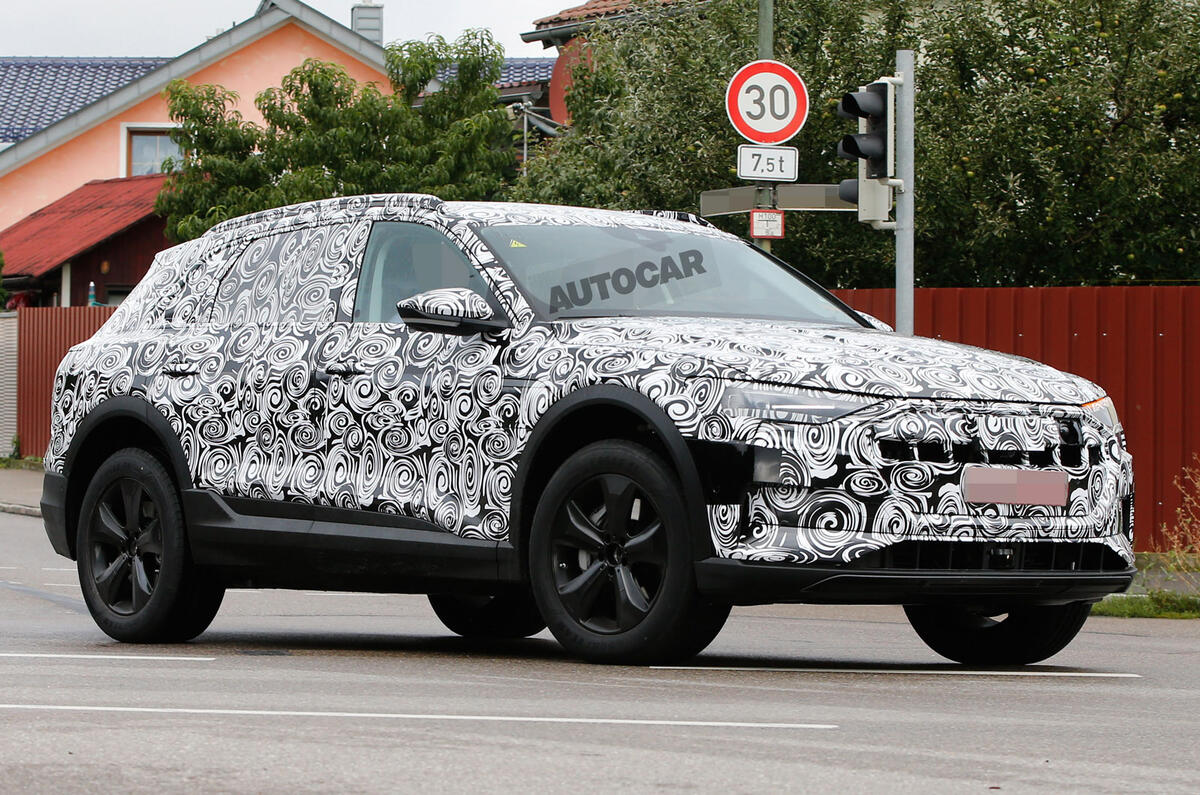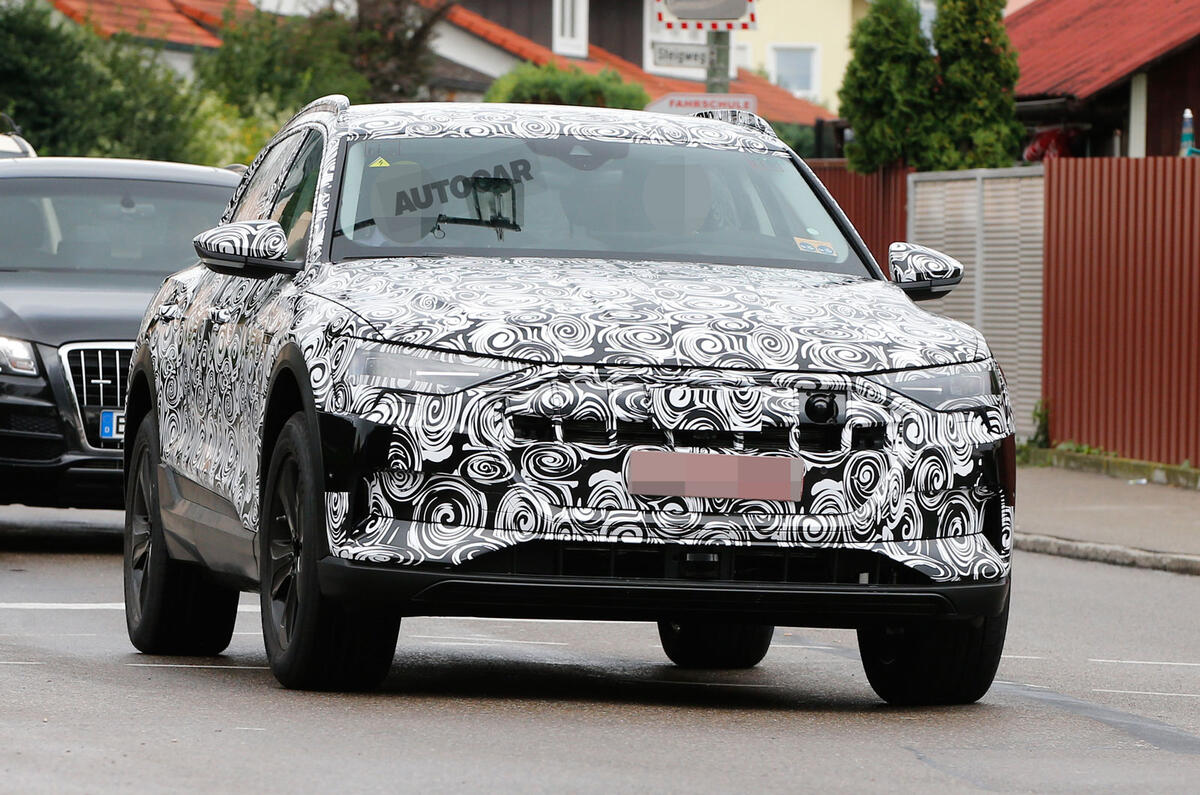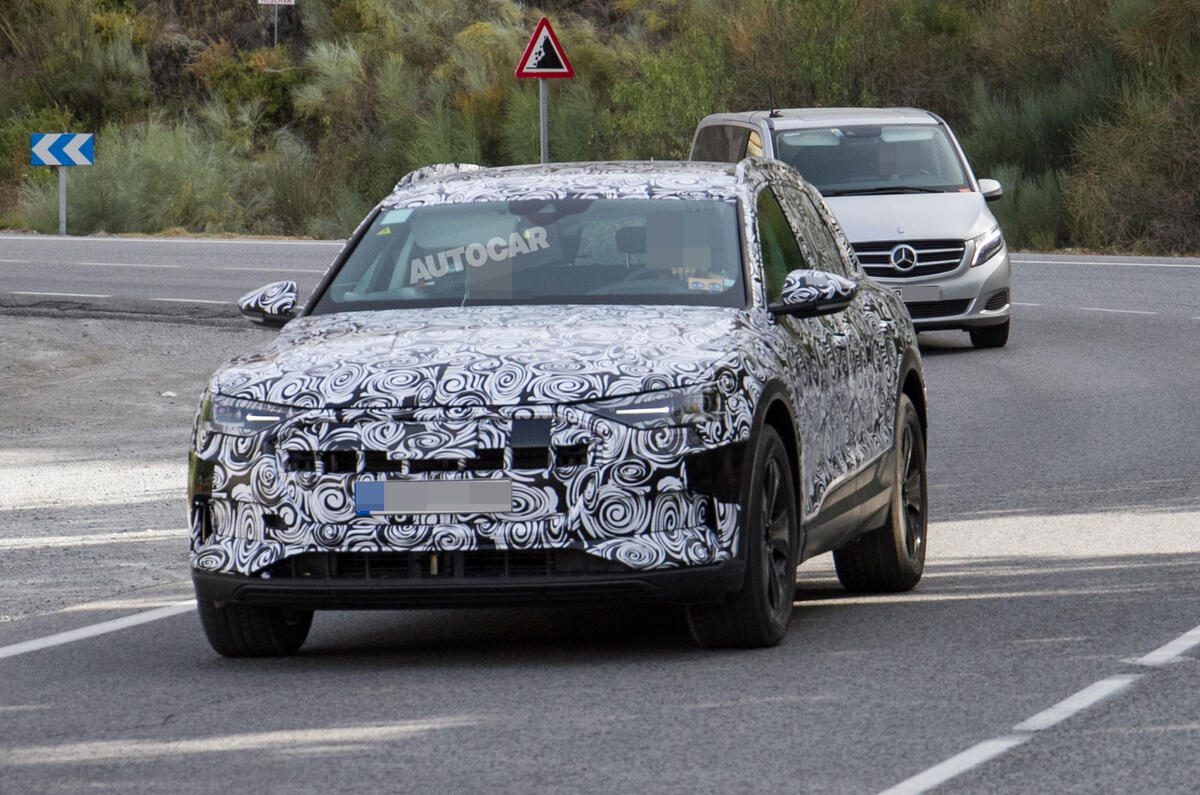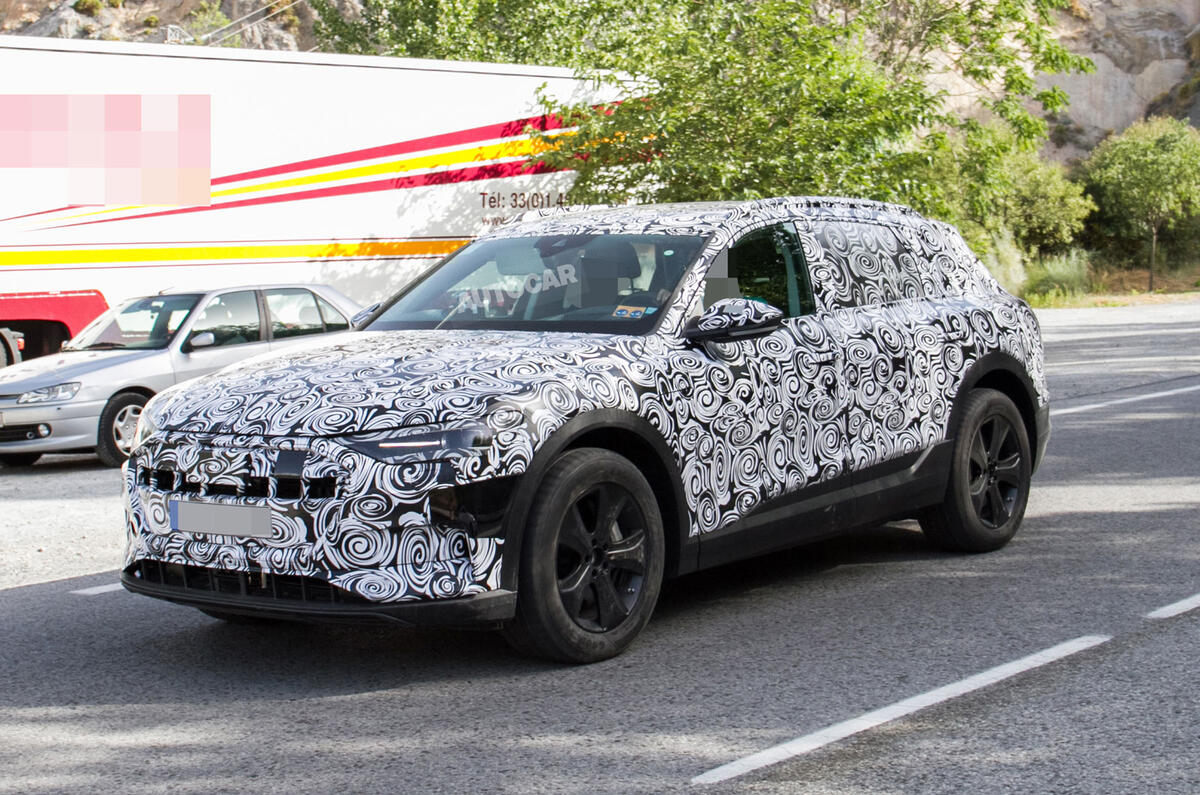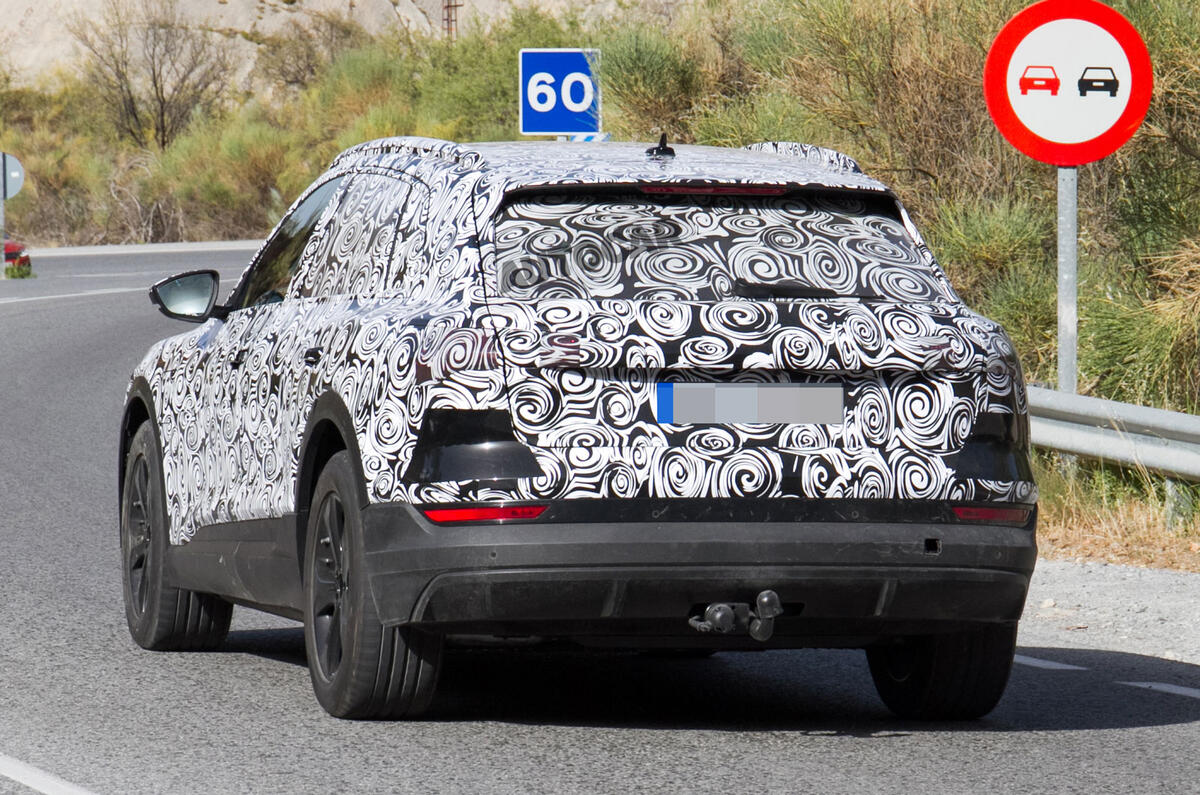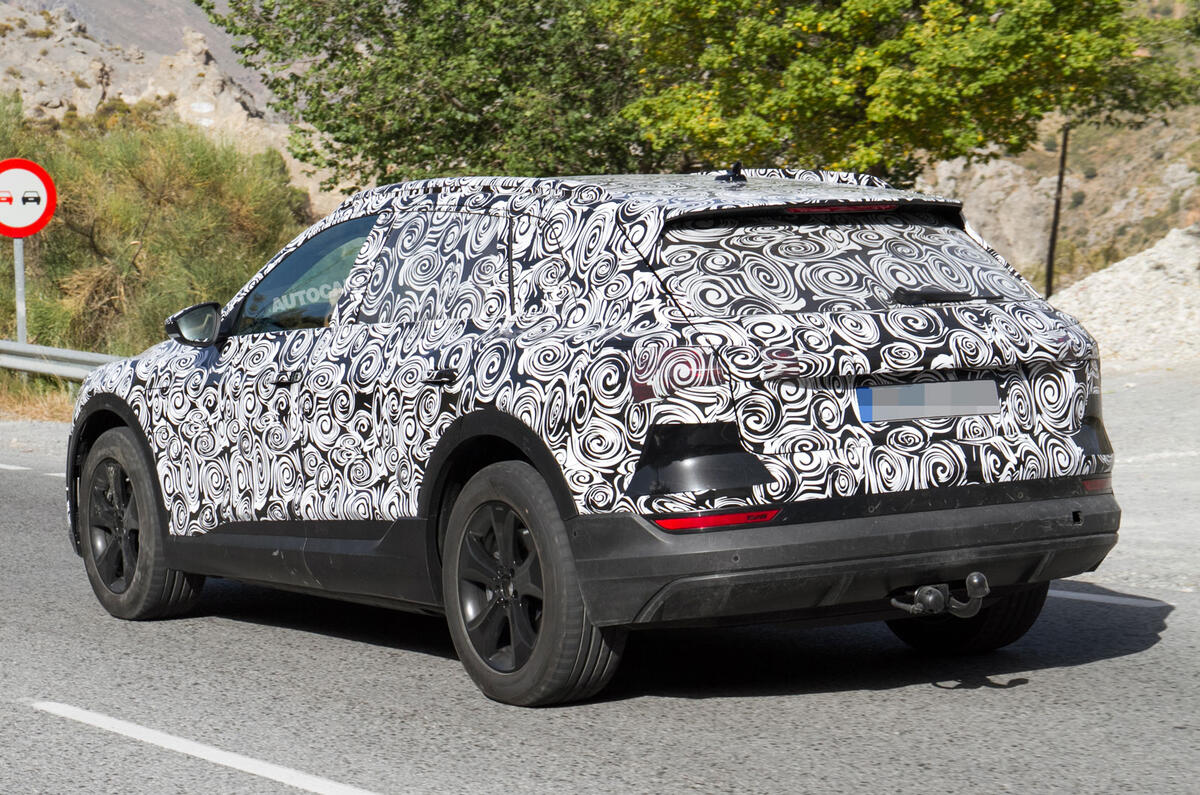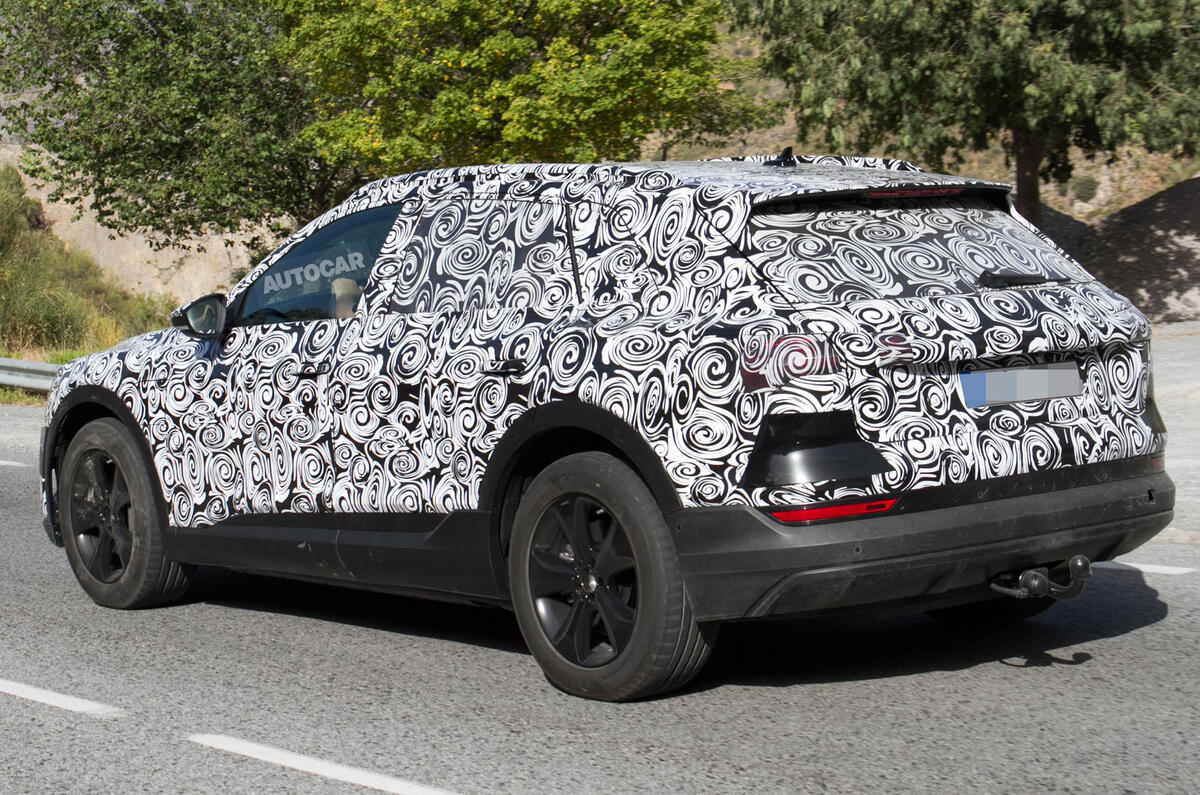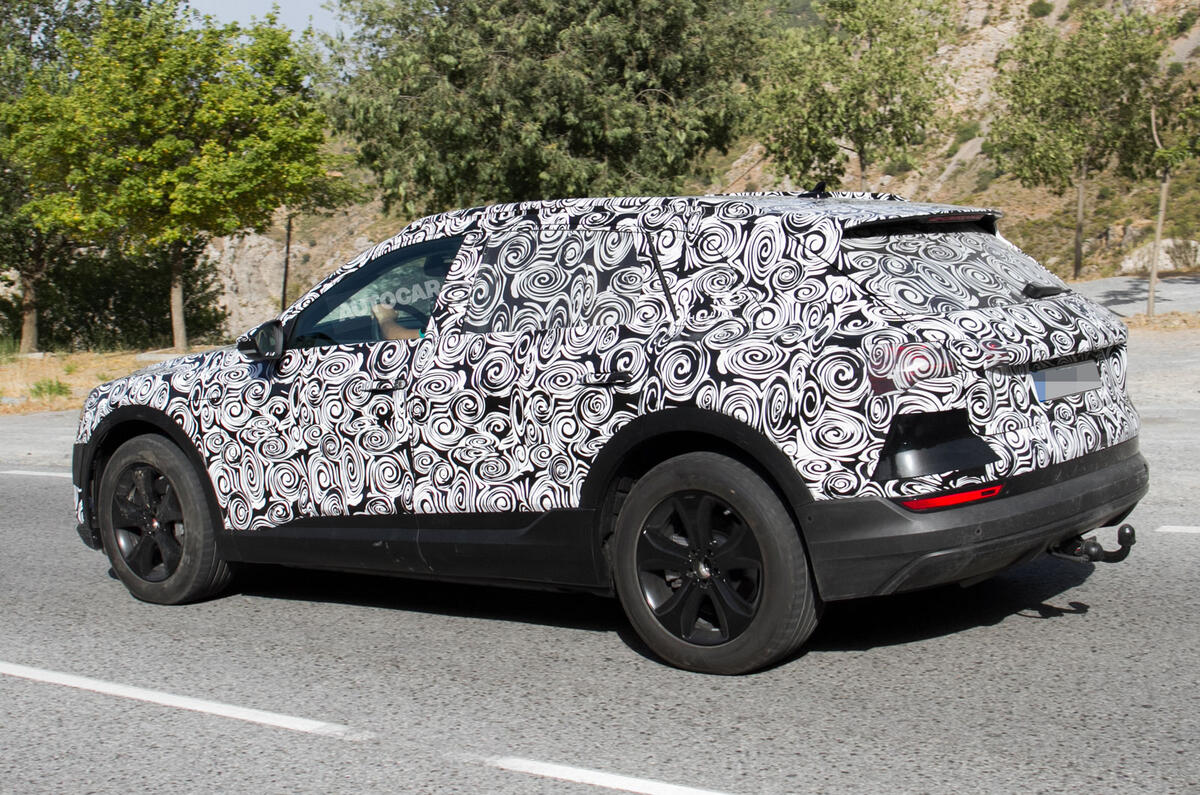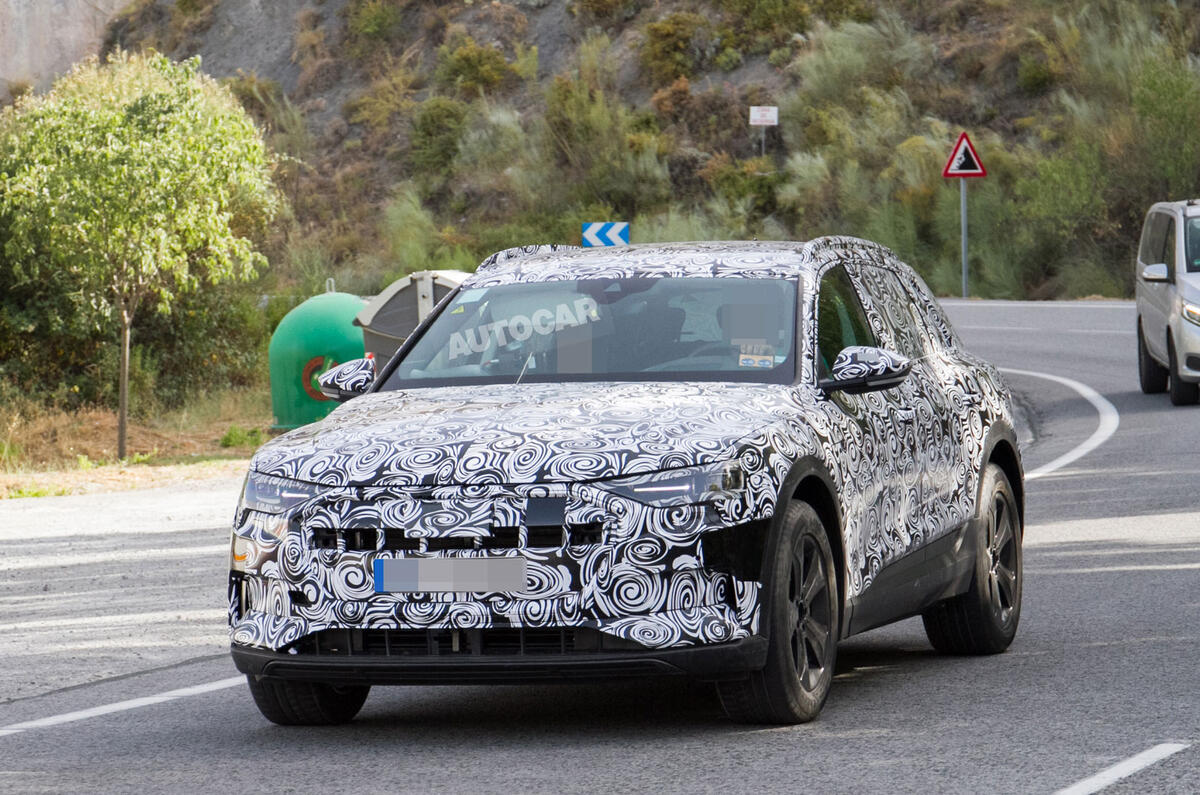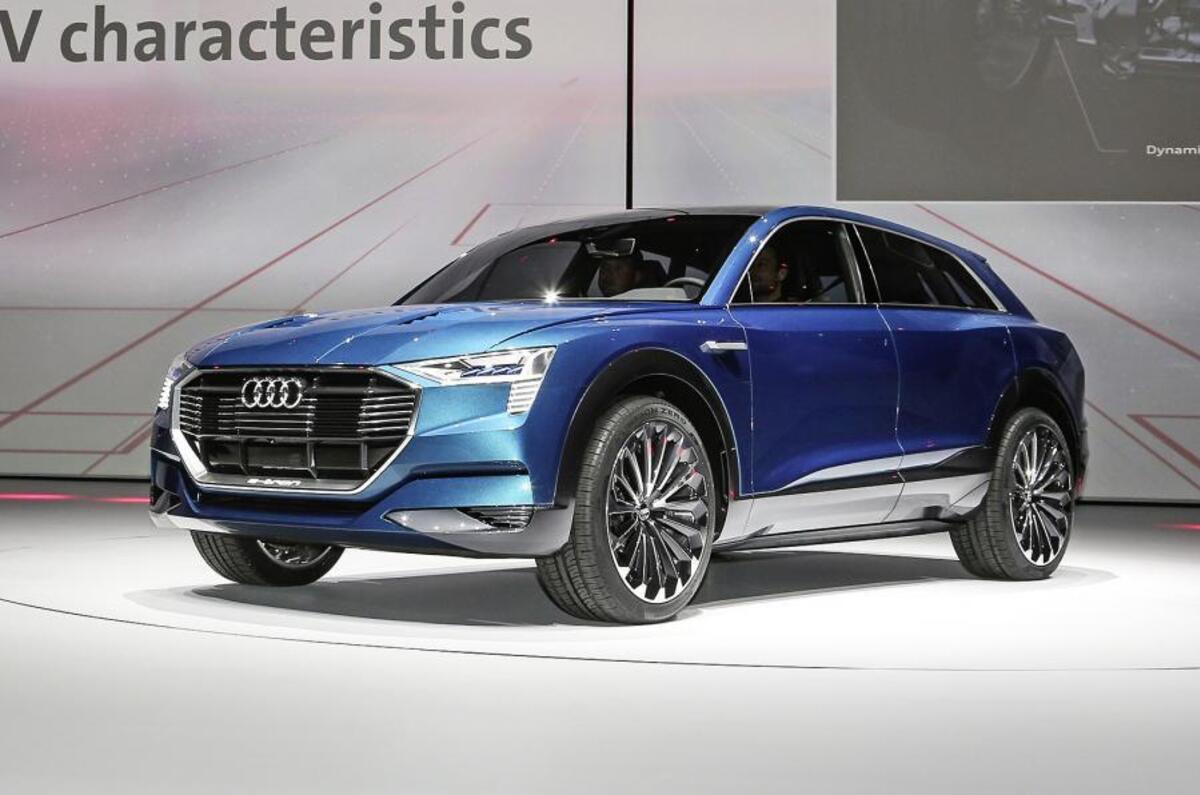Audi has revealed the production version of its e-tron electric SUV will be powered by a two-motor powertrain, 95kwh lithium-ion battery and be capable of 150kWh DC fast-charging, the latter claimed as a world-first and more rapid than the Tesla supercharger network.
Releasing more technical details ahead of its launch in August, the e-tron was shown to the press at a Siemens heavy-duty electrical engineering test centre in Berlin, where the e-tron was subjected to a symbolic 500kV test to ‘spark’ the car into life.
The exact output of each e-tron motor, however, remains a closely-guarded secret, but is expected to be around a maximum of 160bhp with overboost – equivalent to around 120kW — to give a total peak output of around 320bhp or 240kW.
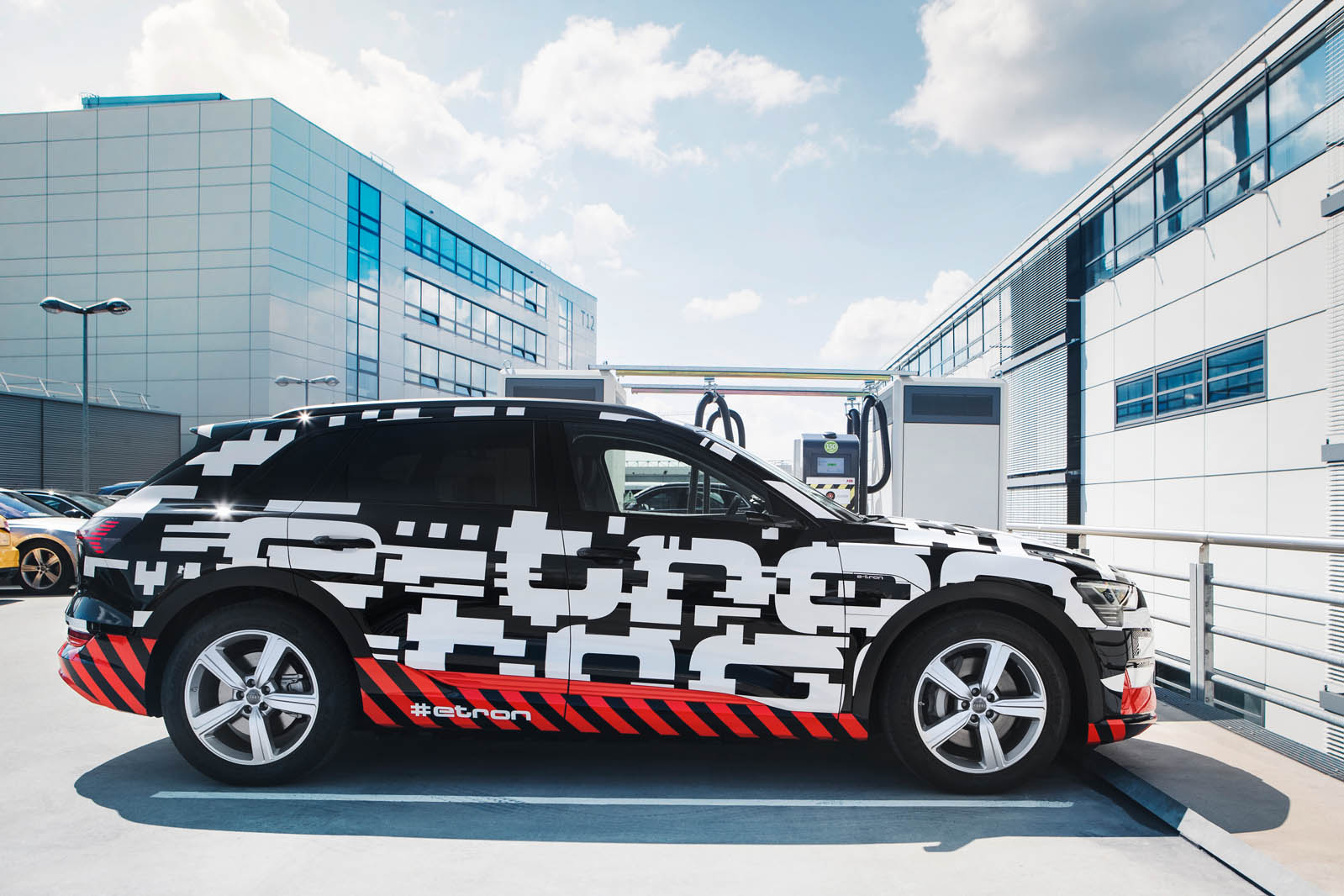
That also suggests the e-tron will be badged ‘55’ under Audi’s new badge/naming system, specifically introduced to put combustion-engined, hybrid and BEVs on an even-footing in the model hierarchy.
“We have decided to keep the e-tron name and use it like quattro,” a source told Autocar, “The first of our sporty models was simply named the Audi Quattro. Our first all-electric car will simply be badged Audi e-tron.”
Although powerful, the production e-tron’s output is less than the 496bhp quoted for the two concepts shown so far, because the concepts featured a three-motor powertrain with a single front motor and twin rear motors.
However, the choice of a twin-motor layout at launch paves the way for Audi to introduce a performance e-tron powered by three motors a couple of years post-launch.
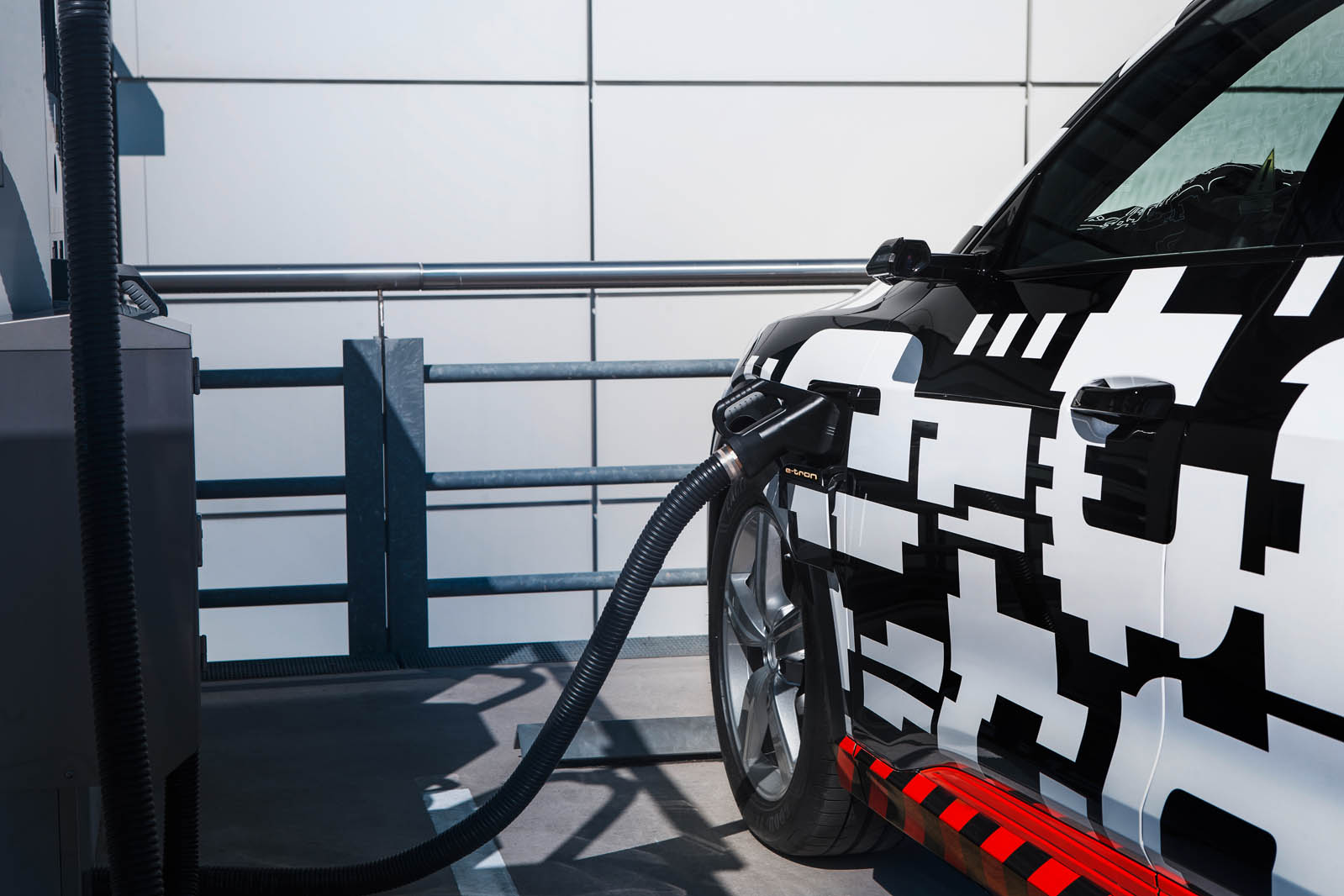
Details of the e-tron’s production lithium-ion battery pack have also been revealed for the first time.
Mounted in the floor, between the front and rear axles, to keep the CofG as low as possible and maximise crash protection, it will use pouch-type cells, packaged into 36 shoe-box sized models.
Each module contains 12 pouches, supplied either by LG Chem or Samsung, and each rated at 60Ah – higher than those used by both Nissan and Tesla.
The bulk of the modules are in a flat main casing, but some are housed in a supplementary ‘saddle’ casing above the main battery and under the rear seat.
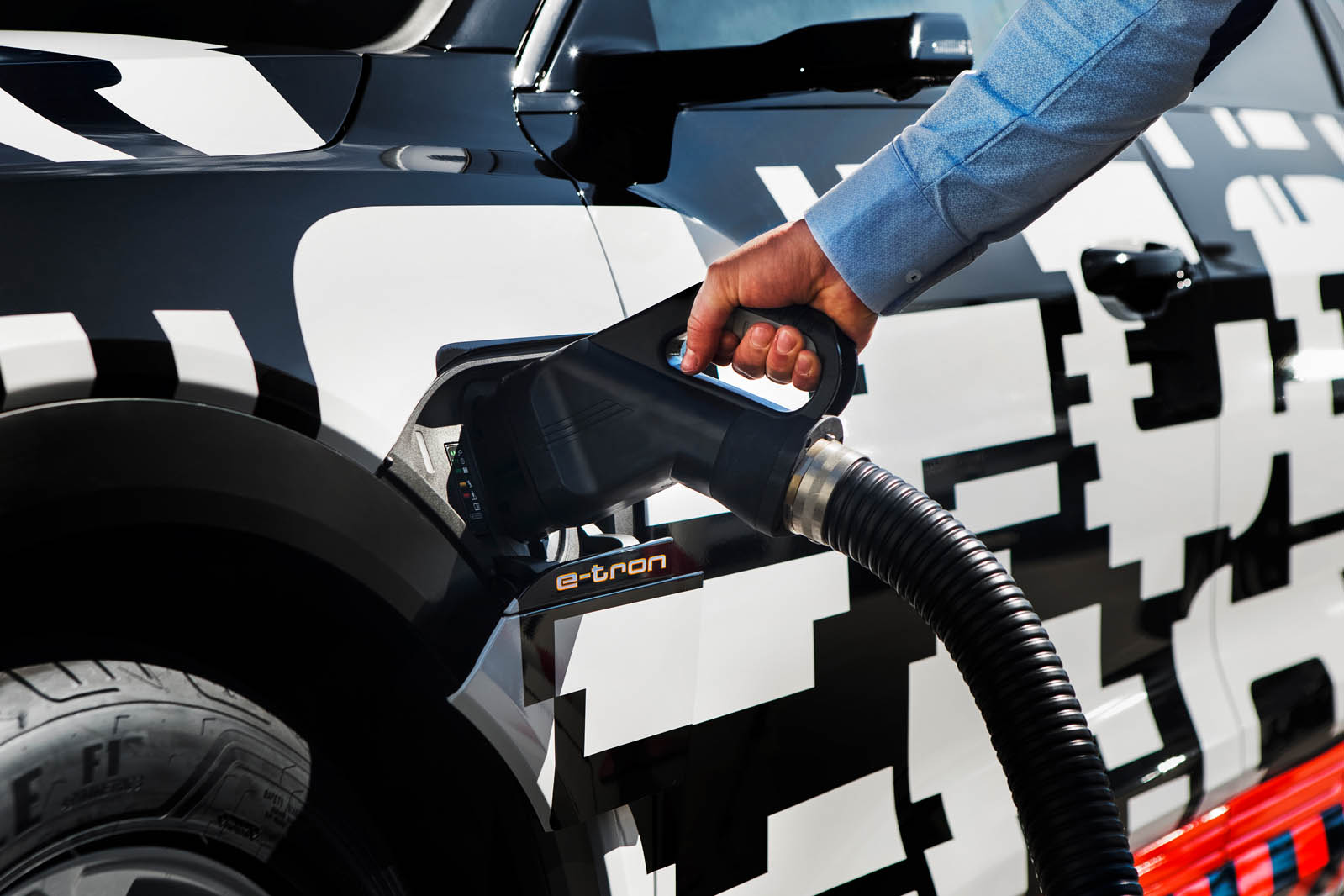
The battery is no lightweight, contributing at least 700kg to the e-tron’s kerb weight.
A key part of the battery is a water-based ‘lattice’ cooling system, bonded to the underside of the modules to maximise heat transfer and shedding heat through a conventional, front-mounted radiator. A second heat-pump system with a plate heat exchanger — effectively an air con system — can boost cooling or heating to keep the battery at its optimum operating range of 25-35 deg c in extreme climates.
Charging at home or mainstream-roadside will be AC and rated at 11kW, although an optional 22kW charger will be on the price list.
The 150kW DC fast-charger – said to be capable of filling the battery to 80 per cent capacity in 30 minutes – will be standard and take advantage of the IONITY rapid-charge network being set up by a consortium of Europe’s car-makers.
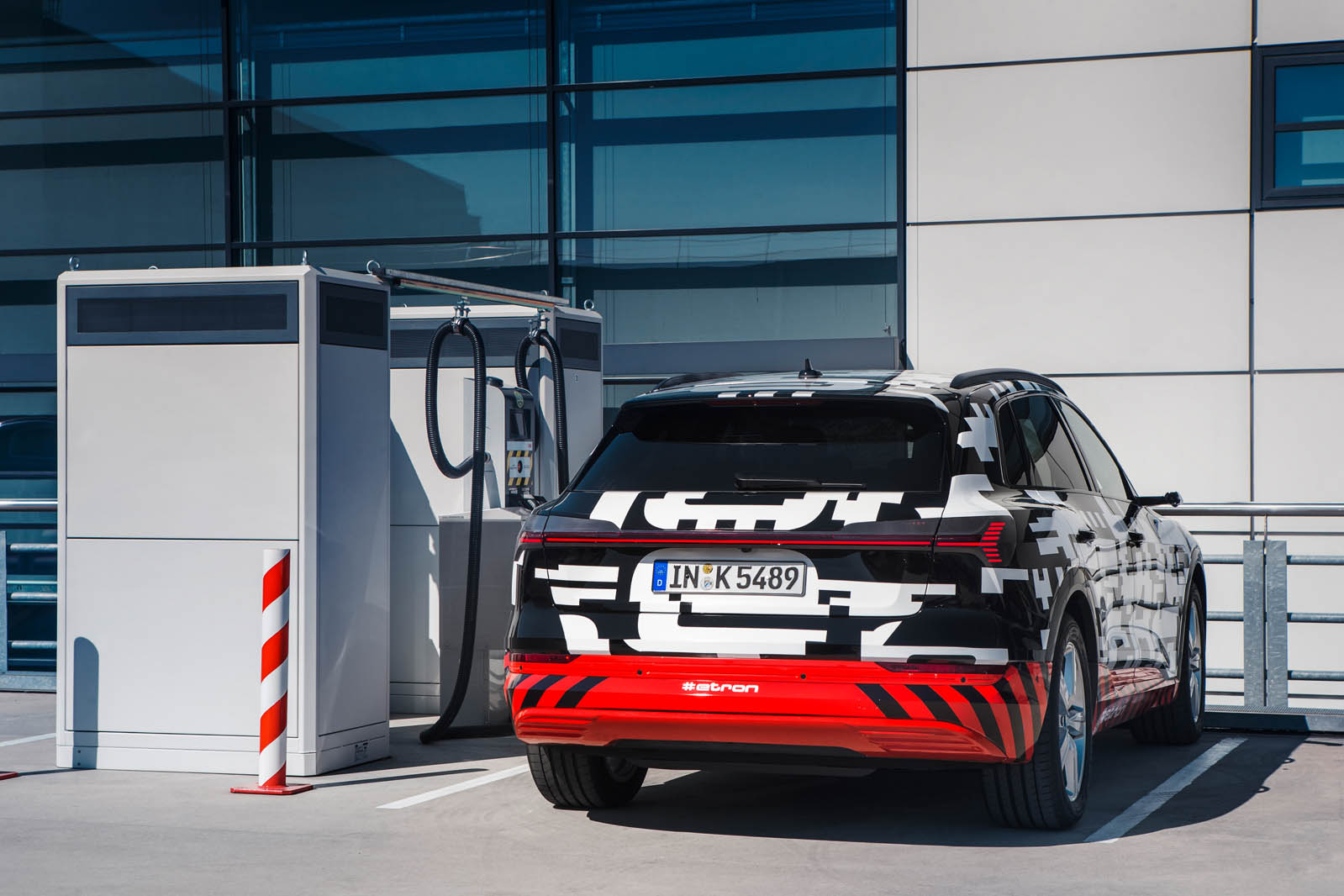
Previous stories:
Production of Audi's first stand-alone electric model, the E-tron SUV, will begin later this year using what the company claims is a carbon-neutral production process.
Following the announcement that £1000 deposits are being taken for its first bespoke electric vehicle, Audi said that its Brussels factory, where the E-tron will be built, has been certified as CO2-neutral. The facility uses renewable energy and offsets its carbon to enable what Audi claims is a waste-free process.
This will substantially boost the E-tron's well-to-wheel sustainability, giving the car — which is due on roads in early 2019 — an edge, environmentally speaking, over its electric rivals and setting a new bar for premium manufacturers.
Audi won’t yet discuss production or sales numbers for the E-tron, but it says it has test-marketed the electric SUV in two European countries and reports potential demand for the model to be in the “double-digit thousands”.
Audi adopted the highly unusual tactic of unleashing four E-tron prototypes to prowl the streets of Geneva earlier this month to fight back against the launch of the Jaguar I-Pace.
“The E-tron will be a game-changer for Audi,” said marketing boss Bram Schot. “It’s our first electric model and it's going to be a volume model.”
The production E-tron will be revealed at the Brussels motor show on 30 August as the first of three battery electric vehicles (BEVs) that Audi will launch by 2021.
By 2025, the company promises to have 20 electrified models on sale, with half of those being BEVs.

The E-tron will have a range of models with battery packs and motor power outputs of different capacities.
Audi has also raised the possibility of Audi Sport-tuned versions of the E-tron. “The question is 'when?'” said Schot. “The electric powertrain gives really good performance, so the driving experience gives such a good feeling.”
E-tron models could also be sold on a monthly subscription, which would allow buyers to switch between Audi models to suit particular driving demands. “We're actively looking at every option,” said Schot.

Technical details
Audi has been using a 250-strong E-tron development fleet over the past year to rapidly build mileage and finalise the set-up of the EV.
The car's design looks to have been toned down compared with the 2015 E-tron quattro concept (see gallery) that previewed it, with a slightly less butch front end and less raked rear windows. But the concept's light designs, which include a strip to connect the tail-lights, appear to have been retained.
The E-tron is predicted to have a range of at least 500km (311 miles) and is built on a development of the electrified platform that Porsche is using for its Mission E electric saloon. It's powered by three electric motors, with two driving the rear wheels and the other powering the front ones.
This set-up was used in the E-tron quattro concept, which was said to provide maximum combined outputs of 496bhp and 590lb ft, a 0-62mph time of 4.5sec and a restricted top speed of 131mph – a preview of what’s to come with the production model.
This set-up will also be used in Audi's second electric SUV model, which itself was previewed by the E-tron Sportback concept shown at the 2017 Shanghai motor show. This features a more swept-back design and will make it to market one year after the regular E-tron.
Audi has previously said the E-tron will “cost about the same as a well-specced Audi A6”, suggesting it will have an entry-level price of at least £60,000. The I-Pace is priced from £58,995.

On-sale date
Audi sales and marketing boss Dietmar Voggenreiter said that Audi has chosen to launch the E-tron in 2018 because battery technology is now mature enough to be able to offer a range of more than 500km (311 miles). This figure is “crucial”, he said, because consumers won’t accept less. Charging infrastructure is also now growing rapidly — another key reason for choosing a 2018 launch date.
“A 400-500km range must be possible and we must have a fast charging infrastructure,” said Voggenreiter. “Both things are coming in 2018. The battery energy density is there and there's already a lot of charging infrastructure in Europe, the US and Asia.”
Voggenreiter said Audi was involved through the Volkswagen Group with rival firms such as BMW, Daimler and Ford in ensuring there’s a fast-charging network for longer-range electric vehicles to use.
“It’s not our job to invest in charging points,” he said. “We're pushing and organising this, though, and working with our partners on it.”
Voggenreiter referred to the ‘chicken and egg’ situation of limited charging infrastructure to date; there has been no need for third parties to install chargers because there are not enough cars to use them, and vice versa. “No cars, no infrastructure, but in the next two years there will be lots of investments,” he added.
First customer deliveries of the E-tron are scheduled for the beginning of 2019.

E-tron name
Audi has opted not to launch its electric cars under a sub-brand, like BMW has with its i models and Mercedes-Benz with the EQ range. Instead, it's using E-tron, which has been a suffix on Audi's hybrid cars, as a model name in its own right.
The new SUV is intended as a stand-alone, milestone launch model to introduce the technology, employing a similar strategy used by Audi with ‘quattro’ in the 1980s.
Speaking last year about the car's name, Audi boss Rupert Stadler said: “It's comparable to the first Audi Quattro, which was known simply as the Quattro. In the long term, the name 'e-tron' will stand for a pure-electric driveline structure.”
Voggenreiter said the e-tron name will be used on a range of follow-up electric and plug-in hybrid vehicles, where it will appear mostly as a suffix, as is the case with the existing A3 e-tron. It’s likely that Audi’s next-generation models will all get electric versions, while an A8 e-tron is most likely to be the first candidate.

An SUV body is important for the E-tron, because it's the most on-trend bodystyle, said Voggenreiter. “A lot of customers have been asking when we’ll bring this car to market,” he said. “There's certainly demand in the premium segment; it’s the right product. It’s a real SUV, with Audi design language.”
Voggenreiter suggested that Audi's future range of e-tron models will have slightly different styling from the Marc Lichte-designed new look that's currently being rolled out across the rest of the brand's line-up.
“The e-trons are close to the designs of Lichte but in different packages,” he said. “There isn’t an engine in the front.”
The size of the E-tron suggests it’s a Q6 in all but name, but Voggenreiter hinted that the Q6 is a separate project. He cited speculation that the Q6 should be a “four-door SUV-coupé” based on the Q5, in a similar style to the forthcoming Q8 being spun off the Q7.
Voggenreiter said the E-tron isn’t the Q6 because it’s “not a four-door SUV-coupé, but a sporty SUV”.
Julian Rendell, Sam Sheehan and Mark Tisshaw
More content:
